Raleigh | Durham | Chapel Hill
September 4, 2024

















Behind the scenes of the Bull Durham musical Exhibitions & performances to see this season
An artist's home reimagined as a community arts space



Raleigh | Durham | Chapel Hill
September 4, 2024

















Behind the scenes of the Bull Durham musical Exhibitions & performances to see this season
An artist's home reimagined as a community arts space




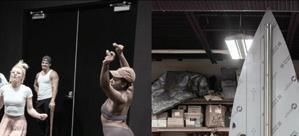
6 Two-term Raleigh mayor Mary-Ann Baldwin isn't running for reelection. How will her legacy hold up? BY JASMINE GALLUP
Duke University encountered mistrust at city hall with some recent rezoning requests. BY
15 A welcome to the INDY 's art issue. BY SARAH EDWARDS
17 Seven performing arts shows to see this season. BY LAUREN WINGENROTH
20 Behind the scenes of Theatre Raleigh's ambitious Bull Durham musical. BY SARAH EDWARDS
28 An artist's home, reimagined for the community: Meet Queen Street Magic Boat. BY SARAH EDWARDS
30 Seven exhibitions to see this season. BY SARAH EDWARDS AND TASSO HARTZOG
32 Artist Ellen O'Grady shares stories of grief, protest, and hope in her comics about Palestine. BY TASSO HARTZOG
34 Talking with artist Thomas Sayre about the Dix Park Sunflower Power Poles. BY CHASE PELLEGRINI DE PAUR
CORRECTION In our story about Durham mayor Leonardo Williams published two weeks ago, we erroneously reported that Michelle Burton was a former member of the Durham Public Schools Board of Education.


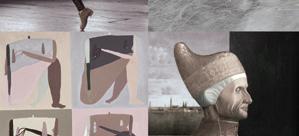



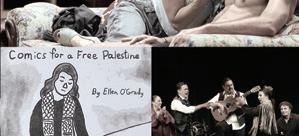
Publisher
John Hurld
Editorial
Editor-in-Chief
Jane Porter
Culture Editor
Sarah Edwards
Reporters
Chloe Courtney Bohl
Lena Geller
Justin Laidlaw
Chase Pellegrini de Paur
Contributors
Mariana Fabian, Desmera Gatewood, Spencer Griffith, Carr Harkrader, Matt Hartman, Tasso Hartzog, Brian Howe, Kyesha Jennings, Hannah Kaufman, Jordan Lawrence, Elim Lee, Glenn McDonald, Nick McGregor, Gabi Mendick, Cy Neff, Sam Overton, Shelbi Polk, Byron Woods, Barry Yeoman
Copy Editor Iza Wojciechowska
Interns
Matthew Junkroski
Mila Mascenik
Avery Sloan
Creative
Creative Director
Nicole Pajor Moore
Graphic Designer
Ann Salman
Staff Photographer Angelica Edwards
Advertising
Publisher
John Hurld
Director of Revenue
Mathias Marchington
Director of Operations
Chelsey Koch
Circulation Berry Media Group
Membership/subscriptions John Hurld
INDY | indyweek.com
P.O. Box 1772 • Durham, N.C. 27702 919-666-7229
support@indyweek.com to email staff directly: first initial [no space]last name@indyweek.com Advertising sales sales@indyweek.com 919-666-7229
Contents ©2024 ZM INDY, LLC All rights reserved. Material may not be reproduced without permission.

Election season is under way and so is our election coverage. Two weeks ago, we wrote about the Wake County Democratic Party’s decision to endorse candidates in nonpartisan local elections that pit Democrats against other Democratic candidates. It’s been a divisive issue, as our readers note, but there are so many important races—and issues—on voters’ ballots this fall.
From reader KRETH BALL-JOHNSON via email:
If recent Indy Week coverage tells us anything, it’s that Wake County is certainly in for a contentious political season, up and down the ballot. Republican vs. Democrat, Democrat vs. Democrat. Something most of us can agree on, though, is the role libraries serve in bringing our community together as well as nourishing our minds. The mission of Wake County Public Libraries is to instill the love of reading and to foster the pursuit of knowledge for the residents of Wake County. The library is a place for everyone. This fall we all have an opportunity to help build a stronger library system by supporting the library bond referendum. New libraries to support our neighbors in Rolesville and Apex (Friendship area). Replacement and expansion of libraries to support our neighbors in Raleigh (Athens Drive area), Wendell, and Fuquay-Varina. As well as renovations and refreshes at countless library facilities across the county. The projects supported by this bond would put 87% of county residents within 10 minutes of a library. $142 million is an intimidating figure, but spread amongst county residents, the individual financial impact is estimated to be a $2.50 tax increase per $100,000 of assessed property valuation. It seems a small price to pay for all we receive in return. I hope you will all
join me in voting for the library bond in November.
Summer intern Avery Sloan wrote about some of the third-party candidates that will appear on voters’ ballots this fall, as well as ranked-choice voting.
From reader ALLEN RAMSIER via email:
I would like to amplify Duke University public policy professor Asher Hildebrand’s points about ranked choice voting (RCV) in the August 13th article about third parties in the upcoming 2024 election.
As Hildebrand notes, a vote for a third-party candidate can be a spoiler for a major party candidate in a close race. However, asking a voter to forego his or her preference for a third-party candidate in favor of choosing the lesser of two evils from the major party candidates denies that voter from truly voting their preference and conscience. Implementing ranked choice voting would allow voters to express their true preference and will result in an election where the winner earns a majority of votes.
RCV benefits the voter by allowing a preferred candidate choice and then gives the voter an option to rank the majority party selections in an instant run-off. The major party candidates won’t ultimately have their vote

Does Durham Public Schools have an overarching policy governing how students use their computers? It doesn’t seem like it.
BY AMANDA ABRAMS backtalk@indyweek.com
The message from my son’s fifth-grade teacher arrived in February. My 11-year-old wasn’t listening in class. Instead, he was browsing the internet on his Durham Public Schools (DPS)–issued Chromebook, often while his teacher lectured at the front of the room.
“Mom, everyone’s doing it!” he said. I must’ve looked skeptical, because he elaborated.
“Cooper’s watching Barcelona play Real Madrid. Simon is watching a video of cats playing soccer. Isaac is looking at Useless Websites. Henry’s playing Minecraft. Jayla is watching YouTube Shorts.” In the end, he estimated roughly four-fifths of his classmates at this Durham neighborhood elementary school were tabbing over to websites rather than doing a computer-based math assignment.
That’s when I started paying attention. When my son and his peers finished their classwork, I learned, instead of being asked to talk quietly or read, they were frequently allowed to play educational computer games for the rest of the period—or to scroll YouTube or other favorite, if officially off-limits, sites. If a substitute was covering for an absent teacher, the kids might spend the whole class entertaining themselves on the internet—and reportedly so might the sub. Even during class, the kids were finding ways to get more online time; when I listened closely to my son and his buddies, I heard them sharing strategies for better evading their teachers.
This, it seems, is public school in the post-COVID era. In 2020, when the schools rapidly shuttered, every student got a Chromebook—what’s known as 1:1 technology. That was a godsend, allowing education to continue. But in the

two years since COVID receded, laptops remain and are regularly employed. And it’s not apparent whether DPS administrators have a plan or set of policies governing how they’re used.
To be clear, I’m not talking about educational software, a highly undervetted field of pedagogy that’s now ubiquitous throughout DPS. Nor is this about learning management systems like Canvas, where students access course materials and submit assignments. And I’m absolutely not blaming teachers, whom I’ve found to be almost universally devoted to students’ growth, even under increasingly dismal conditions; they can’t be expected to monitor 20-plus kids’ screens.
This is specifically about the ease with which students can visit sites online, despite system-wide filters, because of a half-baked 1:1 policy. Sure, students can’t get to pornography (I think), or to most social media sites, but by and large the internet—with its unlimited number of entertaining, mindless, intriguing, frictionlessly scrollable web pages—is right there, just as hard for kids to resist as us adults and maybe more. Whether they’re supposed to be doing classwork or they’ve brought the computer home, the temptation to waste time online is always there.
I’m not the only one taken aback. For this piece, I solicited feedback through neighborhood listservs and local discussion groups on Reddit and Facebook. I heard from dozens of parents about their dissatisfaction with the way DPS handles student technology. Many, like me, were caught off guard.
“My daughter was struggling in sixth grade at Githens
[Middle School], so I looked at her search history on her Chromebook and came to discover she was spending ALL DAY on YouTube at school,” wrote one father on Facebook. (Virtually all the parents I heard from asked to be quoted anonymously in order to protect their children’s privacy; kids’ names have been changed.)
A mother whose son attends Rogers-Herr Middle School wrote, “I could go on for days about what my middle schooler has to say about friends gaming on computers or how some kids go through Pinterest to get on social media [sites] like Instagram.”
“We have two rising first graders and we were shocked about the amount of screen time in our kindergartners’ class this year,” wrote a father in response to my listserv message. “The biggest concern we had was the lack of communication and transparency. We didn’t even know that our kids had access to screens until they started talking about what they were doing in class, and we never got a clear answer about how much time they spent on [them].”
Parents weren’t necessarily worried about the online content their kids were looking at—though, time being the zero-sum thing that it is, an hour spent on a video game in class is an hour not absorbing academic material. The bigger concerns were about the mental and emotional habits internet use fosters: Shorter attention spans. Weaker emotional regulation. Addictive behavior.
“The computers, and the gaming—it’s so powerful. It’s not a fair fight for the kid,” said a mother whose son attends Riverside High School. “There’s so much money and research that’s gone into hijacking everyone’s brain
and eyeballs. It’s not just a discipline issue. The kids need help to limit it, even more so because of their developing brains.”
Parents whose kids have ADHD were particularly upset. Homework these days is usually assigned on a computer, but their kids can’t be left alone to do it because they invariably get distracted and fall into an internet rabbit hole. Several parents tried to get help from DPS but said the effort became Kafkaesque and was never fully successful.
“School administrators have said they’d love to be more restrictive, but the lead isn’t coming from the district,” said a mother whose son, a 10th grader at Riverside, has severe ADHD. “They can’t take
school systems use software like GoGuardian, which can show teachers what sites their students are visiting or lay out a program in which only a few web pages are allowed. Chapel Hill-Carrboro City Schools uses GoGuardian and also provides each school with an “instructional technology facilitator” who helps guide the use of Chromebooks.
DPS hopes to get funding from the North Carolina Department of Public Instruction for computer monitoring software this year. That would be a big step, though some teachers complain it turns them into computer cops. And it doesn’t work when students take their devices home.
It would be better to end the 1:1 poli-
“The biggest concern we had was the lack of communication and transparency. We didn’t even know that our kids had access to screens until they started talking about what they were doing in class.”
the lead unless it’s a district policy.”
DPS’s focus on technology has grown over several years, following emphasis at the state level. The district’s 2018–23 Strategic Plan stated that all teachers, leaders, and staff would use technology as a tool for “accelerating and personalizing student learning.” One-to-one technology had been part of that strategy; COVID just hastened it. By 2023, the district had met that goal.
But DPS’s most recent strategic plan barely mentions technology, and it’s not clear what the current policies are guiding teachers’ use of Chromebooks, or even who sets those policies. In response to my questions, DPS administrators sent a statement.
“Our Board has honored teacher autonomy, working under the direction of school leadership, in determining the precise amount of time any one student might be engaging with curriculum-aligned activities on a computer on any given day,” they wrote.
That sounds to me like there is no overarching policy.
Durham is far from alone. A quick search of “computers” on Reddit’s Teachers page, for example, illustrates how pervasive the problem is around the country. Some
(continued from page 3)
count reduced by third-party votes if they sufficiently appeal to independent voters to earn a second or third choice ranking. Voters win, candidates win, and democracy wins!
Ranked choice voting has been used for over a century in elections across the country and is used currently in 28 states. Other problems that ranked choice voting addresses are:
• The cost of elections is reduced by removing the need for run-off elections like the 2024 NC run-off election for just three Republican-only candidates.
• Since run-off elections attract far fewer voters and so are less representative, ranked choice voting provides instant run offs when the highest number of voters come to the polls.
cy, or at least implement a more surgical approach to computer use. That’s how private schools like Durham Academy (DA) approach student technology, according to DA parents I spoke to. But private schools, of course, are immune to the endless budget struggles that beset public schools.
This past year was tough for DPS. COVID-related learning loss continues to require major attention, and the salary snafu and ensuing public battle that began in January pretty much eclipsed everything. That makes this school year a great time to begin to address students’ Chromebook-abetted internet access, something one parent described as “a social and educational experiment.”’
I’m not excited about being part of this experiment. My son just started sixth grade, which means he’ll bring his computer home every night. I dread the battles. Meanwhile, my four-year-old is heading to kindergarten next year. Buried in DPS’s online registration form is an opt-out page, allowing parents to say no to screens at school for their child. When the time comes, I might just give it a try. W
Amanda
Abrams is a freelance writer in Durham and a DPS parent.
• Election results are faster because of the instant run-off of ranked choice voting.
• In Oregon and Alaska voter-focused independent candidates became viable options over career politicians and special interests.
• In Maine the tone of campaigns improved as candidates appealed to a broader range of voters rather than just a limited base.
• With the option to vote for a single candidate or to rank multiple candidates, pessimism about voting will be replaced with more voter power and choice.
My research into improving voting processes led me to Better Ballot North Carolina which is working to make RCV an option across the state (betterballotnc.org).


Raleigh mayor Mary-Ann Baldwin isn’t running for reelection after two terms in office. How will her legacy hold up as the city moves forward without her as its leader?
BY JASMINE GALLUP backtalk@indyweek.com
Atense silence hung over city hall. Raleigh City Council member Christina Jones, with a slight smile, had just moved to restore Citizen Advisory Councils, a system of resident input groups dismantled in 2020 under Mayor Mary-Ann Baldwin’s leadership.
After a beat, a few city council members—those in the know—hastily made their own comments in favor of`restoring city support for CACs. Baldwin kept her cool, at least until a few minutes later, when in a clipped, measured voice, she said it would have been “considerate” of Jones to share her motion with the full council before “surprising” people with it at the table.
“The reason I’m OK with how this happened today is because this is what you did to us four years ago,” Jones shot back, referring to the surprise vote to disband CACs,
made without public input. Jones, the former chair of the broader Raleigh CAC (RCAC) organization, had finally reversed what she called “an attempt to silence our voices.”
The scene at February’s meeting wasn’t unexpected. Baldwin has been at odds with some council members since 2022, when four newcomers, including Jones, were elected. The current differences on issues ranging from development to community engagement and a Gaza ceasefire resolution occasionally escalate into heated dialogue, marking a shift from Baldwin’s early days as mayor when the council was united in a flurry of pro-development activity.
In 2019, Baldwin, who had served on the council for a decade through 2017, entered a crowded mayoral field as the voice of experience, promising to support community policing, create more walkable neighborhoods, and
build more affordable housing. With a stagnant city council fraught with infighting frustrating many Raleighites, Baldwin won the race with 38.2 percent of the vote, taking charge of a younger council and embarking on an era of productivity.
Over the past five years, Baldwin led the council in a series of sweeping reforms that will shape Raleigh’s future for decades. Among her accomplishments are the signature “missing middle” housing policy, an $80 million affordable housing bond, and $39 million in federal funding for Bus Rapid Transit along New Bern Avenue. She’s also overseen progress on Dix Park construction and helped secure $300 million in public funds for renovations to an aging PNC Arena.
As the council made these changes, however, Baldwin’s administration came under fire. The surprise decision to disband CACs, which was not on the agenda and left council member David Cox out of the loop entirely, received harsh criticism from CAC members and other neighborhood groups. Later, in 2021, the council made another big decision behind closed doors, changing Raleigh’s election process without discussing the proposal in open session. Despite making some positive reforms that improved voter turnout in city elections, the changes also delayed the municipal election that year and gave city council members an extra year in office.
A few other dark spots mar Baldwin’s tenure. Her position at the contracting company Barnhill, which does business with the city, was controversial. She resigned in 2021, and disgruntled constituents mounted an unsuccessful effort to recall her. Downtown Raleigh has been in decline since the start of the COVID pandemic, with businesses struggling to survive amid crime and economic turmoil. And some say the city mismanaged revenue-generating events, such as the Christmas Parade, after the council disallowed vehicles following a tragic accident, and the IBMA bluegrass festival Raleigh lost to Tennessee.
Before Baldwin left the mayoral race in April citing a previously undisclosed breast cancer diagnosis, she had lost support, with popular former mayors Nancy McFarlane and Charles Meeker quickly endorsing Janet Cowell, a former
council member, state senator, and state treasurer, after she announced her mayoral candidacy in January.
“I don’t feel like things are going that well and it’s time for some new leadership,” Meeker told The News & Observer in March.
But Baldwin has undoubtedly made progress in a rapidly changing city. While her detractors argue that her tenure won’t pan out for Raleigh in the long run, her record of achievement is solid and her legacy visible every day on the ground in Raleigh’s emerging built environment. The city is growing, and Baldwin had no small part in ushering that growth along.
After the 2020 vote on CACs, the COVID pandemic stalled efforts at creating new, more expansive ways of connecting with the public. While the city council created a new Office of Community Engagement in 2022, the CAC vote hung over Baldwin’s administration.
Looking back, Baldwin says that while the decision was not her idea, she “didn’t disagree” with it.
“CACs were fighting amongst themselves about changing their rules,” she says. “They could not build consensus. We wanted to see CACs agree that they would have elections, that they would have different people in charge … to develop future leaders.”
Baldwin adds that while some CACs did a good job bringing in “new blood,” the RCAC faced heavy resistance in trying to incorporate new rules.
“It was frustrating to not be making progress to reform the CAC system,” Baldwin says. “I had a strong feeling that there had to be a better way.”
Jones, the loudest critic of the CAC vote, has long disagreed. Elected chair of the RCAC in 2019, Jones says she saw the “flaws of the organization” and understood CACs were not perfect. She planned to work with the city council to “build community,” she adds.
“When a month later CACs got disbanded, it was a shock. I said, ‘Wait a minute, I thought we were in this together. And if not us, who are you talking to?’” Jones says. “That was a monumental reason why I decided to run [for city council].”
CACs’ return this year has “energized” Jones, she says. As part of a compromise, she agreed that CACs will no longer make advisory votes on rezonings. But that won’t stop CACs from speaking for neighborhoods, she adds.
Jones says she hopes CACs can expand outreach efforts and bring more voices to the table, including renters’. She’s working with leaders to funnel CAC concerns and questions through a council liaison, instead of council members hearing “eight different messages from a million different people,” which was part of the problem before.
“As an organization, we want to be grassroots, we want to be autonomous, but we’ve also never had to do it on our own,” Jones says. “There’s been a big learning curve.”
Efforts to engage the public are also ongoing at the Office of Community Engagement. Baldwin says she’s “very pleased” with its work, including operating a community engagement vehicle and meeting with local leaders about

the future of the DMV site in Southeast Raleigh.
Others disagree, and the city has continually drawn critics for its alleged inability to meaningfully engage the public. The city’s proposed relocation of Red Hat Amphitheater from its current location to a site a block away, which would involve closing South Street to traffic, is one of the latest examples of where the city has fallen short. While keeping the amphitheater downtown has broad support, residents say the move will impact the surrounding neighborhoods and wish they had been consulted.
“The plan to close the block of South Street is being pushed through without public engagement, especially from those most impacted by this closure,” Frank Haynes, a resident of the nearby Boylan Heights neighborhood, told the council at an August meeting.
In 2020, activists marched through downtown Raleigh chanting “I can’t breathe,” and “no justice, no peace,” in a series of protests following George Floyd’s murder. At the time, many hoped city leaders would hear their calls for racial justice and make major reforms to the Raleigh Police Department (RPD).
But four years later, activists feel as disheartened as ever.
“I would give [the RPD] a failing grade, because we have not seen any attempts at cultural change,” says Dawn Blagrove of Emancipate NC. “Or even acknowledgment that there needs to be a change in the culture.”
Blagrove says that while RPD has added new policies,
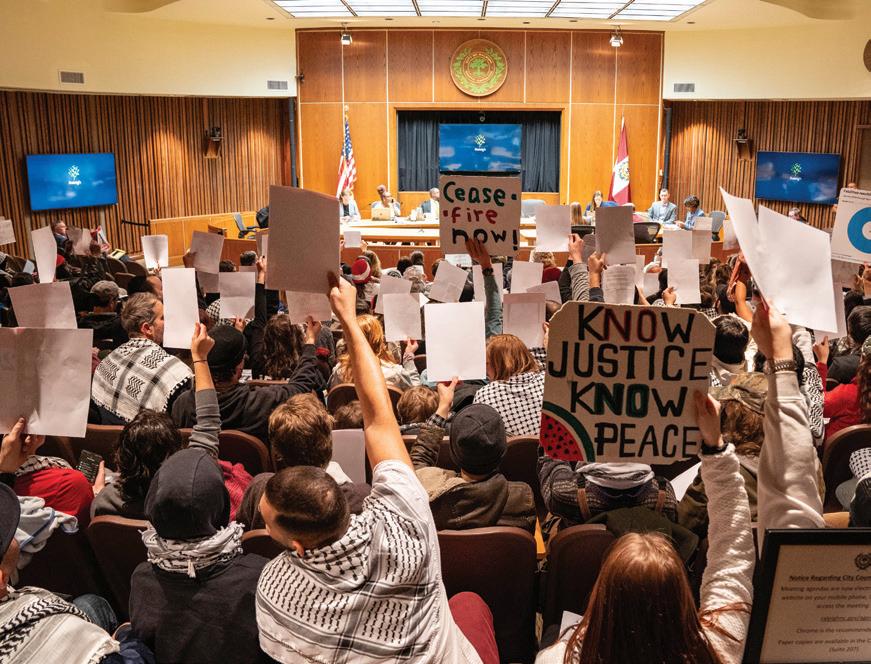
officers have not faced real consequences for breaking them. The city enacted a “de-escalation” policy, for example, in late 2022. But when police confronted Darryl Williams in a Raleigh parking lot just months later, officers tased him repeatedly and restrained him, leading to his death. Officers involved in use-of-force incidents like this remain on the job, Blagrove notes.
“There is a lot of lip service,” she says, “[and] there is very little genuine desire to change. The change has to come from the top down.”
Overpolicing Black and brown neighborhoods and harassing residents continues, Blagrove argues. Activist Kerwin Pittman agrees.
“It seems like [RPD officers] feel more emboldened and empowered at this point,” Pittman says.
Despite ongoing pressure from citizens to divest from policing and invest in mental health and other community services, the city raises the police budget year over year.
Baldwin and other council members defend the budget increases as necessary to pay officers a living wage and fight staffing shortages. But the city’s other efforts to address racial injustice—a police-department-housed ACORNS unit and now-defunct police advisory board— have not satisfied protesters. And people of color, including Javier Torres, Reuel Rodriguez-Nunez, and Daniel Turcios, continue to die at the hands of Raleigh police.
One area in which Baldwin has seen undeniable success is in adding density to the city.
Baldwin championed Raleigh’s “missing middle” policy, and after passing in 2021 it has changed the city’s built landscape significantly. Designed to allow developers to build more townhomes, condos, cottage courts, and accessory dwelling units, the more permissive zoning structure has so far resulted in the construction of more than 2,800 new housing units, 203 of which the city considers affordable.
In June, planning and development director Pat Young touted the program’s success, calling it “one of the most productive in the country.” The city’s historic housing bond also fueled the construction of additional housing, with $7 million going to King’s Ridge, a nonprofit-operated apartment complex designed to help people transition out of homelessness.
The “missing middle” policy has mainly faced criticism from homeowners in historic neighborhoods, who argue the new rules don’t increase affordable housing but allow developers to build out of step with neighborhood character.
In 2023, six Hayes Barton homeowners sued the city (and a local developer) over the construction of 17 townhomes expected to sell for some $2 million apiece. The project was allowed without a rezoning hearing thanks to “missing middle.” In July, a judge blocked the project.
The council’s seeming willingness to deviate from the city’s Comprehensive Plan and grant site rezonings on a project-by-project basis is a source of frustration for some residents, too.
Despite this pushback, Baldwin says the city has “done the right thing.”
“There’s going to be people who don’t want to see change.

And the fact is we’re changing,” Baldwin says. “We have to consider housing affordability and choice. Not everybody can afford to live in a 4,500-square-foot home. So we’ve got to start doing things differently.”
“Missing middle housing is the type of housing that used to be built before redlining,” she adds, “before they made single-family zoning the god.”
Although Baldwin was first elected as mayor on promises of forward progress, momentum has slowed in recent years amid city council infighting and caustic exchanges at the council table.
Jones maintains that while there have been tense moments, conversations have never turned disrespectful, catty, or childish. Much of the tension has centered on important issues.
“People can disagree and not hate each other. Democracy is not always promised to be nice, to be easy,” Jones says. “We’re allowed to speak and say what we need to say in defense of something we believe in.”
She says it’s “a little bit crazy to expect that you put eight people in a room and [for] them to be best friends all the time and agree” on every issue.
“Whether you’re working in politics or you’re working in finance or at a school, you’re going to have differences of opinion.”
Despite recent conflicts, Baldwin says the council has “still managed to get things done,” moving forward on “a number of rezonings,” affordable housing, and the approval of the Bus Rapid Transit overlay district.
“We haven’t put on the brakes,” she says, citing recent
economic development wins, including the PNC investment.
“The redevelopment for an entertainment district over there, we’re talking a billion-dollar investment, largest in the history of our city,” Baldwin says. “That is a legacy type of thing that we all could get behind …. We’ve moved things forward.”
Although Baldwin will leave the council, she’ll continue to advocate for affordable housing as executive director of Cooper Charitable Foundation, which provides housing stability grants to help people buy homes or stay in their current homes.
“This is something I really care about,” Baldwin says. “In some ways, having this role gave me permission to leave or not run again, because I’ll still be involved with work that I’m passionate about and warms my heart.”
Baldwin will also continue to serve on the GoTriangle Board of Trustees, at least until her term expires in 2026. As she moves away from local politics, Baldwin says she hopes the next council will continue her work to invest in Triangle sports and expand regional rail service.
College basketball, professional hockey, and women’s soccer can all be bigger economic drivers, Baldwin says. She adds that train lines connecting Raleigh to Washington, Wilmington, Salisbury, and Asheville could be environmentally friendly regional “game changers.”
After 15 total years in office, Baldwin is looking forward to taking care of her family and herself, she adds. She’s ready to step back.
“I felt that sometimes, somebody’s telling you something and you’re not getting the message,” Baldwin says. “I just said, ‘I feel like it’s time.’” W
This is the first in a four-part series on the Raleigh City Council leading up to the municipal election this fall.
Duke has encountered mistrust at city hall with several recent rezoning requests.
BY CHASE PELLIGRINI DE PAUR chase@indyweek.com
Last week, a Durham City Council discussion about a Duke University rezoning request took a bizarre turn.
“It’s like your uncle who paid for you to go to college but molested you. It’s a difficult relationship,” said mayor pro tem Mark-Anthony Middleton, borrowing a quip from comedian Chris Rock, to describe the town and gown connection.
Middleton’s comments came as lawyers for Duke petitioned the council to rezone chunks of campus to the city’s University and College (UC) designation. That unique zoning, which already applies to most of Duke’s campus, allows the university to build essentially whatever it wants without having to go back through the lengthy council approval process for developers.
While Duke has owned many of the par-
cels in question for years, the university’s lawyers said that the rezoning would help with future campus-wide planning.
The council, reluctant to provide that blank-check rezoning for Duke without more details, decided to postpone a vote on the rezoning until its October 7 meeting and requested that Duke’s lawyers come back with a more detailed plan for development for the parcels.
That hearing marked the second time this year that Duke’s rezoning requests have run into skepticism at city hall.
The August rezoning request was only the second half of a two-part bundle that had originally included several parcels in the Burch Avenue neighborhood. Duke withdrew those Burch Avenue requests after the planning commission, at a meeting in

April, recommended that the council deny them. The planning commission, however, did recommend the city council approve the request that landed before it in August.
At both meetings, officials pushed for more details from Duke.
In April, Burch Avenue residents questioned what Duke would build on the sites, like the Old Laundry building at 400 Gattis Street, that are in the middle of narrow residential roads.

“We made three specific requests of things we wanted Duke to exclude from the list of possible developments: a parking deck, a bus depot, and a sewage and waste-water treatment plant. Duke would not commit to excluding any of those possible uses,” Russell Lacy, who lives in the Burch Avenue neighborhood, told the INDY at the time.
At the August 19 meeting, council member Javiera Caballero specifically worried that the university could obstruct city plans to build a 10-foot-wide pedestrian and bike path near Duke Hospital, while council member Carl Rist questioned the lack of sustainability commitments, especially given Duke’s
recent climate commitment.
“[The rezoning] makes sense from just a land use [perspective],” said Caballero. “But we all know that Duke has also not been the best actor sometimes. And so there is community distrust, and there’s certainly distrust on this council.”
Nil Ghosh, the attorney representing Duke for Morningstar Law Group (and who previously served on the planning commission), argued that such conversations could take place when the university actually began developing the areas and that Duke could not provide plans “because they literally do not have plans” yet. Ghosh had made similar arguments before the planning commission in April.
That vagueness clearly frustrated council member Chelsea Cook.
“There will be no enforcement mechanism at that time once the zoning has changed,” said Cook. “You’re asking us to make a change without having any idea what the plan is.”
Middleton, though, said that while he has his fair share of beef with Duke, he was not going to “use the particularities of this case as a cudgel.”
“I mean, it’s a university …. They’re not gonna build a strip club,” Middleton said. “I don’t see how that’s gonna forward their mission.” W


Thousands of college students across Wake County experienced housing insecurity last year, and tens of thousands experienced food insecurity. A local nonprofit is making a small dent in those numbers.
BY CHLOE COURTNEY BOHL chloe@indyweek.com

In the winter of 2023, Kaleb H. was pursuing a degree in environmental science full-time at NC State University and working five part-time jobs when they lost their housing.
Kaleb, who asked to be identified by their first name and last initial, was growing some plants inside their family home, and one had begun to rot and smell.
“I got home from work, my mom started making a big issue about these plants, and she pretty much kicked me out over that at midnight,” Kaleb explains.
Their home life was challenging for a long time, Kaleb says. But this was still unexpected. In the middle of the semester, juggling several jobs, they suddenly had no stable housing.
Kaleb was one of more than 5,000 students at NC State experiencing homelessness at some point in 2023. NC State professor emeritus Mary Haskett authored a new report that found that 14 percent of the 38,000-plus student population experienced homelessness and 30 percent experienced food insecurity that year.
Haskett also cofounded the Raleigh-based nonprofit Housing Options for Students Today (HOST). The program places students who need temporary housing into free homestays for up to six months and supports students in securing long-term, independent housing.
Before retiring in January, Haskett researched and taught in the university’s Department of Psychology with a focus on family homelessness. She became interested in college students’ housing security after realizing a student on her undergraduate research team didn’t have stable housing.
“I had a student disappear from the work, and my initial response was frustration: ‘Where is he? He’s being irresponsible,’” Haskett says. “I found out later he was living in his
car. That was a wake-up call, one of those forehead-slap moments.”
Haskett surveyed NC State graduate and undergraduate students about housing and food security in 2017. She found that 15 percent of the student body was food insecure and 9.5 percent had experienced some form of homelessness in the past year—whether they were couch surfing or living outside, in a shelter, or in other temporary housing.
Haskett and her team repeated the survey in 2020 and 2023. Each time, food insecurity rates increased. Homelessness remained fixed at 14 percent from 2020 to 2023.
Haskett’s newest report found, unsurprisingly, that housing and food insecurity worsen college students’ overall well-being; the chronic stressors impact their ability to focus on courses. She says it’s a vicious cycle.
“Grades start slipping, and then students may lose their scholarship, which impacts their finances again,” Haskett says. “It impacts sleep, concentration, decision-making, and problem-solving. Sometimes students don’t make what we consider the best choices because they are operating at a fundamental survival level.”
Haskett cofounded HOST with a group of Triangle social workers, higher education professionals, and health-care providers. The program vets potential host families and trains them on trauma-informed care, mental health awareness, diversity, inclusion, and cultural competency. Students may meet with potential hosts multiple times before moving in, to ensure it’s a good fit for everyone.
Libby Stephens, HOST’s program coordinator, says hosts and students discuss their expectations for the housing situation and create a document together outlining needs and boundaries.
“We are there to provide a lot of support for the hosts
and students during the process,” Stephens says. Since it launched in 2022, HOST has worked with about 50 students around Wake County, placing nine into homestays and providing financial assistance to others to find or maintain stable housing. HOST keeps tabs on the students, tracking their well-being and degree progress even after they exit the program.
Over time, students have reported lower stress, greater ability to focus on their courses, and greater overall well-being. Haskett and Stephens say all of the student-host pairings have been successful, and all students found stable housing after their homestay.
In spring 2022, Jabson Aloma was midway through a mechanical engineering degree at NC State, living with roommates in a four-bedroom apartment near campus, and driving to his part-time job at the US Committee for Refugees and Immigrants’ Raleigh field office. Aloma immigrated from the Congo in 2018 and provided translation support and financial literacy coaching to recent immigrants. When his car broke down in April—right before finals— Aloma couldn’t get to work and lost his income source. Then his landlords announced they planned to raise his rent.
Aloma became the first student to find a temporary homestay through HOST. He moved in with Carrie DowSmith, the current chair of HOST’s all-volunteer board of directors, and her husband, Vincent Smith, and stayed with them for six months.
“It was a life-saving opportunity,” Aloma says. He used the




The Daily: Our writers break down headlines from around the Triangle to get you ready for your day.

Wednesdays
Insider: A guide to our latest stories in print and online that you shouldn’t miss.
(hint: it might be all of them)


























Fridays

Field Guide: Our rundown of cultural news and events around the Triangle.






















Thursdays
Events: Your guide to a wide range of the coming weekend’s events.










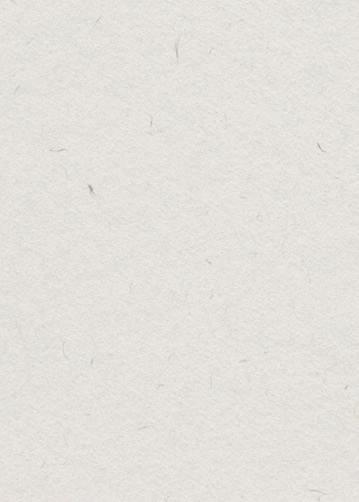

Whether you want weekly round-ups or daily updates, we’ve got what you need. Scan the qr code or visit indyweek.com/choose-your-indy-newsletters to sign up now.
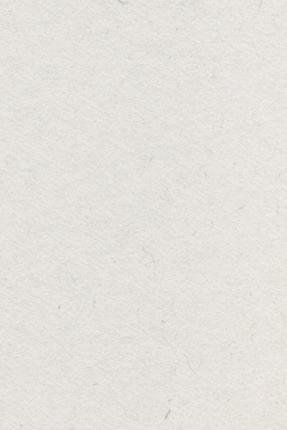
time to save money, and HOST’s student housing advocate, Alden Hearn, helped him secure on-campus housing for the following semester.
Aloma found the Dow-Smiths to be warm and kind. Carrie Dow-Smith, a pediatrician at WakeMed with three adult children, “basically considered me like her child,” Aloma says. He didn’t have any family living in the United States, so he began listing Dow-Smith as his emergency contact.
Kaleb H. also found temporary housing with HOST after learning about the program through a professor. In spring 2023, they moved in with Sarah and Chris Wyne, a retired couple with grown children and plenty of space in their empty nest.
A lover of plants and gardening, Kaleb speaks in botanic metaphors to describe their HOST experience.
“When I was at my parents’ house, I never flowered,” Kaleb says. “I just had my low-lying leaves, and got mistaken as a dandelion and pulled and thrown.”
But Kaleb isn’t a dandelion. They’re a purple coneflower.
“Purple coneflower has low-lying leaves that people mistake as weeds, and then … out emerges beautiful purple flowers that rise above the ground,” Kaleb says. With the Wynes, “I lived with experienced gardeners who saw my low-lying leaves for what they were and nurtured me.”
Kaleb spent four months with the Wynes while Hearn helped them search for longterm housing. One of Kaleb’s nonnegotiables was to cultivate a garden in the next place they lived.
Kaleb found a house close to campus and their part-time jobs. They’ve been living there for about a year and in the front yard planted a garden with corn, beans, squash, strawberries, zucchini, and sunflowers.
“It’s all ripening right now …. It’s very symbolic,” Kaleb reflects. “Last year, I planted the garden out of hunger …. And [now] I am here marking one year of being in this house.”
The Wynes also hosted Shaw University student Kendra F. and her teenage son, Quincy, in early 2023.
Kendra learned about HOST at a
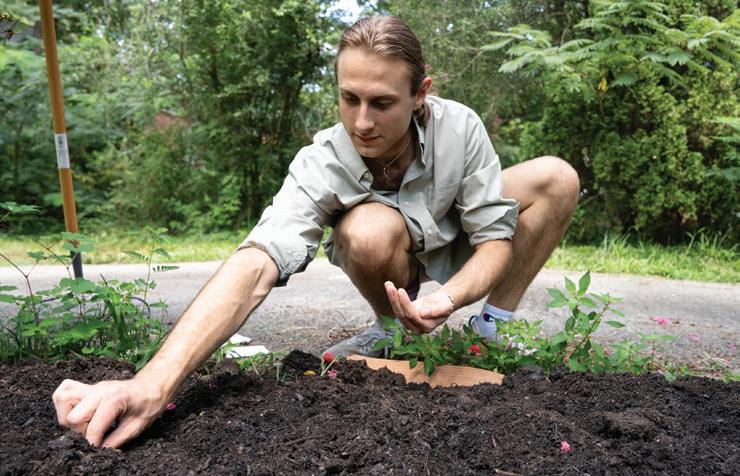

moment when she was feeling afraid and needed extra support, she says. She was laid off and sleeping on her niece’s couch.
The Wynes offered her and Quincy comfortable beds, and HOST helped her find an apartment once she’d saved enough money at her new job.
“Exiting the Wynes’ home was bittersweet,” Kendra recalls. “We did have a moment where we huddled and hugged and shed tears. But it was tears of joy.”
Kendra, Kaleb, and Aloma each say homelessness is often invisible and hard to talk about, making it that much more difficult to seek help.
“None of my coworkers at that time were aware that I had become homeless. That’s just not something I share,” Kendra says.
It’s the same on a college campus, Aloma says.
“It’s something that you wouldn’t notice unless you have a close friend who tells you about the situation.”
HOST has had small-scale success providing care and stability, but Haskett knows HOST’s services aren’t one-sizefits-all solutions for housing-insecure students. Meaningfully attacking student homelessness in Wake County will require upstream investments that target students before they reach that point of immediate need.
“We used to picture a college campus as being in a bubble, its own little world. And that’s just not the case,” Haskett says.
Students, like everyone else, have to contend with Raleigh’s rising cost of living paired with a stagnant $7.25-per-hour minimum wage. Tuition is also increasing at area colleges (although not in the UNC system), and affordable housing options near campuses are dwindling.
With these forces at play, Haskett says the onus should be on colleges and universities to help their neediest students.
While HOST serves students at any Wake County college or university, Haskett’s research deals primarily with NC State. In her report, Haskett recommends NC State designate a vice chancellor to increase food and housing security; create more student housing to match enrollment growth; help eligible students apply for SNAP benefits; conduct a salary study of student workers; reassess the freshman residency requirement to free up space for housing-insecure upperclassmen; and invest in partnerships with local affordable housing and basicneeds initiatives.
NC State has some resources available
for housing- and food-insecure students through its Pack Essentials program. Mick Kulikowski, NC State’s director of strategic communications and media relations, says the on-campus Pack Essentials Hub offers a food pantry, donation distributions, and student emergency grants.
“NC State continues expanding its essential services to meet student needs,” Kulikowski wrote in an email, adding that the university recently established an Office for Student Life and Advocacy.
But Haskett sees these investments and sees that they haven’t made a dent in the housing and food insecurity data she collects.
“That’s why we’re called Housing Options for Students Today,” she says. “We’re not exclusively thinking about being a host home program, but we do want to test that model, determine whether this can be an effective approach.”
Stephens, HOST’s program coordinator, knows HOST’s capacity to serve students is small but the problem is big.
She says if too many students learn about HOST, “we’d be flooded.” Instead of advertising widely, the program usually connects with students through referrals from on-campus faculty and staff.
Demand for homestays still far exceeds HOST’s current supply. Stephens and Haskett are searching for volunteers with spare rooms willing to host students for a short time.
Hosts can be homeowners or renters if their rental agreements allow long-term guests. They must provide a furnished private bedroom and bathroom and kitchen access including storage in the refrigerator, freezer, and pantry. Hosts aren’t required to provide transportation or meals. They set their own availability. HOST also offers a small stipend to offset utility costs.
For the Wynes, hosting Kaleb, then Kendra and Quincy, was a no-brainer. Sarah Wyne is the kind of person who brings strangers home from the airport to sleep in her spare room when their flights get delayed. When she found out about HOST, she and Chris quickly agreed: we have the space, let’s do it.
“There’s a normal reluctance to change when you get to a certain stage in your life,” Chris Wyne reflects. “This is an opportunity to—on a short-term basis—meet a need of someone else, and make a new friend. I regard the three individuals that we’ve had in our home as [people] that we’ll know forever.” W


Daring new dance works and plays around the Triangle this fall.
BY LAUREN WINGENROTH arts@indyweek.com
North Raleigh Arts and Creative Theater, Raleigh Sept. 13-22
Oh, to be a fly on the wall as North Carolina playwright Paul Green and author Richard Wright discussed (and argued over!) the Broadway adaptation of Wright’s Native Son in 1941. The play Native, by Ian Finley, imagines what those conversations, many of which took place in Chapel Hill, were like. In Native as in real life, the pair’s musings on race, politics, and religion come to a head in a disagreement over a single page of the script—ultimately ending their collaboration and their friendship. A coproduction of North Raleigh Arts and Creative Theater, Reclaiming Our Time, and EbzB Productions, Native will place a Tar Heel legend (recently memorialized in a new book of essays) in the broader context of American racism and American theater.

tow for a collaborative work called Rooted, directed by Casel’s partner (in life and art), Torya Beard. Duke students and faculty members will get in on the collaboration, too, during a residency leading up to the public performances, which will explore how jazz music, tap dance, and spoken word share collective “roots.”
Label Movement.
It makes sense that Flink and his troupe are interested in violence and its consequences: the choreographer’s signature movement style, called bodystorming, is highly physical and involves “contact-sport-level impact” (don’t worry, it all happens at a “responsible level of risk”). They’ll put that athleticism to use as they plow through the soil and dig up hard truths about our country’s glorification of war and violence.

Duke Arts Presents, von der Heyden Studio Theater, Durham Sept. 27-28
Ayodele Casel is one of tap dance’s most exciting voices, known for her dynamic collaborations with musicians like Arturo O’Farrill and her ability to embody the past, present, and future of the art form through her joyful work. Casel comes to Duke in September with a crew of musicians, dancers, and spoken word artists in
American Dance Festival
Bahama Bluebs, Bahama Oct. 11-13
Can a 30-by-25-foot dirt pit on a farm outside of Durham be the site of a movement-driven examination of America’s military-industrial complex? That’s the proposition of Battleground, a daring new dance work commissioned by American Dance Festival from Minneapolis-based choreographer Carl Flink and his company, Black
PlayMakers Repertory Company, Chapel Hill Oct. 16–Nov. 3
The weeks leading up to the election feel like a good time for a refresher on our country’s Constitution. But in Heidi Schreck’s What the Constitution Means
to Me, an almost one-woman show performed by Julia Gibson at PlayMakers Repertory Company in Chapel Hill, don’t expect something out of your high school government classes.
Instead, Schreck’s play, which was nominated for the Tony Award for Best Play in 2019 and is available to stream on Amazon Prime, is profoundly personal and riotously funny, as Schreck lays bare the ways that our Constitution has failed and continues to fail women. What the Constitution Means to Me is as hopeful as it is searing, radically imagining ways our country could be better. Who couldn’t use a little pre-election optimism?
NC State Live Stewart Theatre, Raleigh Nov. 15-16
Man meets robot. They dance, and it’s … surprisingly beautiful?
Huang Yi’s HUANG YI & KUKA, named after the inventor, performer, and choreographer and his industrial creation, may dispel your preconceived notions about robots. (Be warned: This hunk of metal may make you feel things, too.) Huang and the other dancers partner with KUKA as if it, too, is made of flesh, resulting in tender moments of human-robot connection. KUKA’s artistry may have you forgetting that there’s some serious science behind those moves: each minute of choreography took Huang 10–20 hours to program.
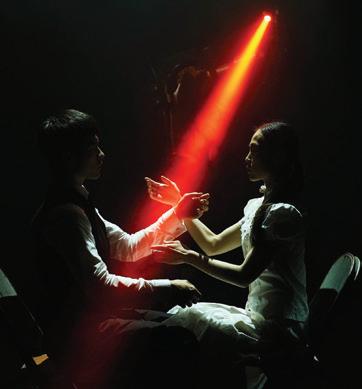
Thankfully, it seems to have been worthwhile for Huang, as a video of him performing with the robot at a TED event has gone viral and reached audiences worldwide.
Those looking for more opportunities to talk robots can reserve tickets to the pre-show dinner or stay for the post-show talk-back on the 15th, or attend the postshow robot party (!) after the family matinee on the 16th.
Duke Arts Presents Reynold Industries Theater, Durham Nov. 15-16
In a dystopian medical ward, a man inches towards death. As he gets closer, his hospital room fills with dirt, first appearing in subtle tricks and eventually in droves.
It’s an obvious metaphor, but a powerful one. (It’s also not the only time that a performance on this list employs dirt to represent something akin to death: see Battleground a few entries prior.) Last Ward,
a dance theater piece created and performed by Yaa Samar! Dance Theater, an imaginative company based between New York City and Palestine, is at times absurd and even humorous, with medicine-induced hallucinations and mundane hospital machinations. But the universality that is the experience of dying—and watching those you love die—comes through in even the strangest of moments, conveyed movingly by the troupe’s dynamic performers.
Carolina Ballet
Raleigh Memorial Auditorium, Raleigh Nov. 21-24
Duo Concertant is one of the simplest yet most enduring works by the late George Balanchine, the father of American ballet and one of the form’s most influential voices. Two dancers, a man and a woman, seem to personify the Igor Stravinsky score, in turns embodying the nimble notes of the piano or the expansiveness of the violin. At times, they stop dancing, wandering over to the two onstage musicians just to listen and admire, and the music takes the spotlight. Carolina Ballet will take on the beloved classic as part of its fall season, paired with a work that is sure to provide a striking contrast: Lynne Taylor-Corbett’s Carmina Burana, a contemporary reimagining of the familiar score, sung live by the North Carolina Master Chorale. Taylor-Corbett’s style of highly theatrical contemporary ballet is often seen on the Carolina Ballet stage in her role as the troupe’s principal guest choreographer; in this work, she explores love, obsession, and Wall Street greed through the story of a working-class man who wins the lottery. W
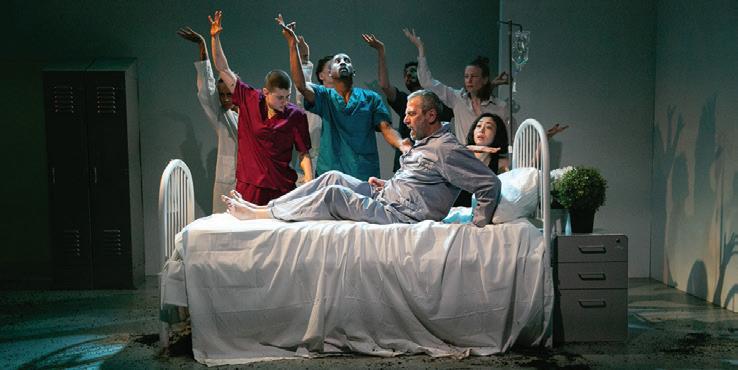


Behind the scenes of Ron Shelton’s Bull Durham musical—which opens, this month, in its titular hometown.
BY SARAH EDWARDS sedwards@indyweek.com
Before Ron Shelton began filming Bull Durham in 1987, he hung out with Durham’s minor league baseball team for several months—clocking curveballs, chewing dugout tobacco, and getting a grasp of the liminal small-town feel that would define the film.
And before Theatre Raleigh debuts its musical iteration of the classic on September 10, Shelton is spending the month, off and on, with the cast as it rehearses a new chapter for baseball’s favorite love triangle: Annie Savoy, Crash Davis, and Ebby Calvin “Nuke” LaLoosh.
Shelton, now 78, is behind the scripts of both Bull Durham the movie and the musical; singer-songwriter Susan Werner wrote the music, repurposing movie lines into songs. The musical has run once, in Atlanta in 2014, though Theatre Raleigh executive director Lauren Kennedy Brady says the script has changed significantly since that first run. Kennedy Brady herself has championed the musical for more than a decade—first as an investor, when she was a Broadway performer and the show premiered in Atlanta, then, later, as its producer, when the commercial rights became available.
The musical has had a long road; after its 2014 premiere and initial adjusting and capital-raising, it hit several road bumps, the pandemic among them, before arriving in the Triangle. Now reworked, the show is back with Raleigh’s professional nonprofit theater company, taking the stage at Duke’s Reynolds Theater in its titular hometown.
“The team is top-notch, and I just think it’s so cool that our Raleigh and Durham audiences are going to experience it,” says Kennedy Brady, who has previously brought the likes of Ariana DeBose and Norm Lewis to Theatre Raleigh. And if all goes well? Next stop: Broadway, the major leagues of musical theater.
And so, one evening, mid-August, the cast convenes in a half-moon sweep of chairs at Theatre Raleigh. It’s the first cast reading and a kitschy ’80s mood has been crafted for the occasion: there are hourglass Dr. Pepper bottles,

a baseball bat lying across a checkered red tablecloth, a screen door propped against the wall. Several actors chew gum with a considered outfield concentration.
Nevertheless, a mood is not a meme: Director Marc Bruni stresses that he’s not here to create a cartoonish ’80s performance. He wants to evoke something human.
“These are real people,” Bruni tells the cast, standing in front of a panel of mirrors that reflects back the twodozen-some cast members. “We’re trying to say something universal about relationships.”
This cast—half of whom are principals brought in from out of town, the other half actors hired locally—seems up for the job. Raleigh’s Ira David Wood III commands Uncle Roy Tuck’s friendly baritone. Nik Walker (Aaron Burr in Hamilton) plays Crash, the jaded major leagues’ has-been brought in to mentor Nuke, the Bulls’ star with pro ambitions and a “million-dollar arm and five-cent head.” John Behlmann reprises the role of Nuke—Behlmann played him in the Atlanta show run, and it’s obvious why. Even from a seated position, Behlmann’s affable physicality is at the fore, delivering each of Nuke’s lines (“I like some things fancy but some things regular—like screwing!”) like a cutter pitch.
Behlmann tells the INDY that the production has gotten “better and better” since its first run.
“I could do it all day,” he says. “It was not a hard ask, emotionally, to be like, ‘Do I want to do this again?’ The answer is yes. And the show, having been part of it for
such a long time, it’s part of my life now, in a weird way.”
Two-time Tony nominee Carmen Cusack, clad in head-totoe denim, plays Annie Savoy, the local community college English teacher, scholar of foul balls and William Blake, who takes it upon herself to bed one player each season. Cusack begins:
“I believe in the Church of Baseball. I’ve tried all the major religions and most of the minor ones. There’s never been a ballplayer slept with me who didn’t have the best year of his career. Makin’ love is like hittin’ a baseball.”
In the corner, Shelton—unassuming in a baseball cap and Blundstones—is smiling.
When the cast breaks for 10, Kennedy Brady introduces me to Shelton. I ask if he makes it back to the area much. Yes, he says: “I never have to buy a drink in Durham!”
“But,” he adds, “you could never imagine how much it’s changed.”
It’s true; Durham has changed. In 1987, the year that Bull Durham was filmed, Durham had a population of 172,450. A year earlier, in 1986, Durham’s last cotton mill—Erwin Mill, now an apartment complex—shuttered; the year following, in 1987, the American Tobacco Company relocated to Reidsville after more than a century as the manufacturing engine of the city.
These closures dovetailed with two decades of widening economic inequality that followed the 1967 construction of NC 147, a failed stab at urban renewal that razed Durham’s
largest working-class Black neighborhood, displacing 500 businesses and 4,000 families.
This is the derelict town that Shelton—a fledgling screenwriter who’d put in some five years in the minor leagues—encountered, as he traced the Southern backroads of the Carolina League, narrating monologues into a microdisc and trying to decide if he was going to attempt a baseball movie. From the beginning, he had a tough time persuading Hollywood to get behind the film: the first two times he shopped it around, every studio rejected the project—an underdog, just like the town and team it was portraying.
“I was a first-time director, which is a problem,” Shelton says. “The subject was baseball, which was a problem.”
But once greenlit, the bet paid off: Bull Durham, which cost around $9 million to make, ended up netting $50 million and several Oscar nods; the performances by Kevin Costner, Susan Sarandon, and Tim Robbins, who play Crash, Annie, and Nuke, were all widely celebrated. (Upon meeting on the set, Sarandon and Robbins began a decadeslong relationship; Shelton is the godfather to one of their children.) Shelton became the kingmaker of smart sports movies, going on to make hits like White Men Can’t Jump and Play It to the Bone
And the Durham Bulls became famous: In 1995, the team graduated from its old home off Washington Street to the ambitious Durham Bulls Athletic Park; by the time the movie had minted a decade, in 1998, the Bulls were a Triple-A team, raising Durham’s profile.
All this because Shelton believed in his material—in part because he’d lived it, having had to wrestle with his own bittersweet feelings about leaving the Appalachian League for grad school, as he did in 1972.
In this way, he’s a bit like Crash.
“Crash is trying to reinvent his dream quickly—‘OK, maybe I’ll be a manager,’” Shelton says. “I was trying to reinvent
my dream quickly, too. I couldn’t watch baseball for several years. It was painful.”
“Ron Shelton is a baseball celebrity,” Behlmann confirms over a phone call. “Every time we’ve done any version of this show and been around actual ballplayers, it’s like having Brad Pitt with you. People know him. They think it’s so great. They love this movie. They think the authenticity of the movie is like, ‘Oh, this is the only one that gets it right.’”
To translate a movie into a musical, certain concessions have to be made.
Sitting in a diner chain near his Raleigh hotel, a few weeks out from the premiere, Shelton forms a frame around my face with his hands.
“In the movies, you have close-ups,” he says. “You don’t have that in theater.”
The unforgettable visual of Annie tying Nuke to her floral bed while she reads him Walt Whitman, for example, is cut in the musical, as are the montages. Time contracts: the scenes go from the ballpark to the bar, to Annie’s house, back to the ballpark. Not every character stays, though some, like the subplot with flirty baseball groupie Millie marrying a devout Christian player, get extra airtime and their own musical numbers.
The music, though, is not a concession: it gives a playful script a playful second life.
“What Susan Werner, the composer-lyricist, has done is to create an incredibly catchy, fun score that is as emotionally complex as it is musically appropriate for the period,” says Bruni, the production’s musical director. “Her task has been to create a score that sounds like it would be the kind of music playing at a roadside bar in 1988 with sawdust on the floor and peanut shells.”
Bruni first saw the movie on VHS, a couple of years after it came out.
“I didn’t really understand it,” Bruni says. “I certainly

enjoyed the baseball aspect of it, but I think it’s a movie that benefits from gaining some life wisdom, as Annie would say. You realize how wise it is at examining human nature and the way that time affects people.”
“Ultimately,” he continues, “this show is about two people reaching a point in their lives where the thing that’s been working for them for a long time is no longer working, and they have to find out what that next chapter is. That’s at the heart of the romance.”
This is another reason he doesn’t want to create something cartoonish—the movie, somehow, never is. Even though it’s eminently quotable and Annie has constructed a vampish Southern melodrama of red lipstick and florid speeches, the characters have skin and spit and sweat to them. Sarandon’s and Costner’s acting evinces a glancing, self-aware vulnerability—they know how to pantomime; they also know how to desire.
Author Raquel S. Benedict describes the state of contemporary cinema in a 2019 essay like this: “Everyone is beautiful and no one is horny.” The essay goes on to make a sophisticated argument about post–Cold War paranoia about fitness, but basically, Benedict’s idea is that Hollywood now prioritizes sex appeal over sexual chemistry, veneers over layers—and movies are worse off for it.
Bull Durham decidedly does not have this problem. Crash and Annie are not 25, or even 35. They are beautiful but they have lines around their eyes and mouths. (Don’t worry: I’m not going to pretend for the sake of this feature that Sarandon isn’t still the hottest woman alive.)
“She was 41 and, they thought, over the hill,” Shelton says, recounting how Sarandon was not on the production shortlist and had to fly over from Italy, untapped and on her own dime, to chase the film herself.
“I said, ‘She’s written as a 41-year-old,’” he continues. “That’s the whole point—[Annie and Crash] both have to stop playing with boys, that’s the unspoken text. It’s been
“This show is about two people reaching a point in their lives where the thing that’s been working for them for a long time no longer is, and they have to find out what the next chapter is. That’s at the heart of the romance.”
great, playing with boys, but now they run into each other and are forced into a decision.”
Compellingly, for a story steeped in the South, no one really remarks on Annie’s age or unconventional dating habits, and the one time one of the players takes a crack at Millie’s sex life, Crash quickly shuts them down.
“He’s really good at his job and there but for the grace of God could’ve had a major league career of some sort,” Shelton says of Crash. “She’s invented this fabulous character that can’t last. What she’s done is build in this affair that’s poetic and philosophical—which is fine, God bless you! But the guy’s gonna leave in September, because the season’s over, and they don’t come back. The hardest thing in the world is a long-term relationship, and she never has to go there.”
Bull Durham is the kind of movie that feels like a secret handshake. I saw it for the first time in college when a friend invited a group over (“What! Y’all have never seen Bull Durham??”) and most recently, last summer, when the Carolina Theatre showed it for the first time since its June 1988 premiere. At that showing, last summer, I took an INDY intern who’d never seen it; when it ended, the local crowd gave a standing applause.
It’s a story imprinted all across Durham—a timeliness that transcends, by a thread, the great speed at which the city is changing. From the perspective of working at a local newspaper (one that was a few years old at the time of the movie) and reporting on local artists, tenants, and the growing unhoused population, it’s hard not to share some of Crash’s world-weary cynicism. These days, beloved local businesses seem to go down like dominoes as out-of-town developers prospect and landlords sink their teeth into a population with stagnant wages.
I thought about this, the night after sitting in on the first cast reading, as I was biking to a Bulls game (incidentally, to meet up with a friend named Annie)—a short, sweaty ride rewarded with a cold beer and tremendous fizz of fireworks. It’s nice that you can still catch a weeknight Bulls game or shoot pool at the Green Room; they’re pleasures worth fighting for.
Of course, it’s not just Durham that is changing. Over lunch with Shelton, later, the conversation shifts to Hollywood, where production is down 40 percent, a downturn that Shelton attributes to Silicon Valley’s austerity measures and the fact that theaters are “only for superhero movies now.”
“Tech takeover is destroying the business. They’re bringing in corporate algorithms, demographic studies, slashing people’s pay,” Shelton says. “We were on strike for a year, almost killed us. Production hasn’t come back. They don’t care—they love the idea of AI getting rid of everything.”
Bull Durham may have had a hard time getting made in 1987, but it’s even harder to imagine a movie like it getting made today—the algorithms might not be so jazzed about a sports story with love interests over 40 and no big turnover in the ninth inning; no second chance for Crash in the majors. The real human drama is in the details, in the trying to figure things out. As Shelton puts it: “It’s never about the big game, ever, ever, ever. There’s almost never a big game.”
And, Hollywood and the real estate market aside, here we are getting a joyful musical version of the story, right here in Durham. It feels like it means something.
“That’s one thing about live theater,” Shelton continues. “Until the holograms take over, there’s no substitute for people coming out on stage and singing and talking to the audience.” W
22 September 4, 2024 INDYweek.com

Above: (from left) Carmen Cusack as Annie Savoy and John Behlmann as “Nuke” Laloosh rehearse a scene of Bull Durham, A New Musical at the Theatre Raleigh Arts Center on Wednesday, Aug. 28, 2024, in Raleigh. Right: Ron Shelton, the screenwriter and director of the 1988 film Bull Durham, observes rehearsal. Below: (from left) Andrew Poston as Jimmy Tide and Director Marc Bruni converse during rehearsal. PHOTOS BY ANGELICA EDWARDS



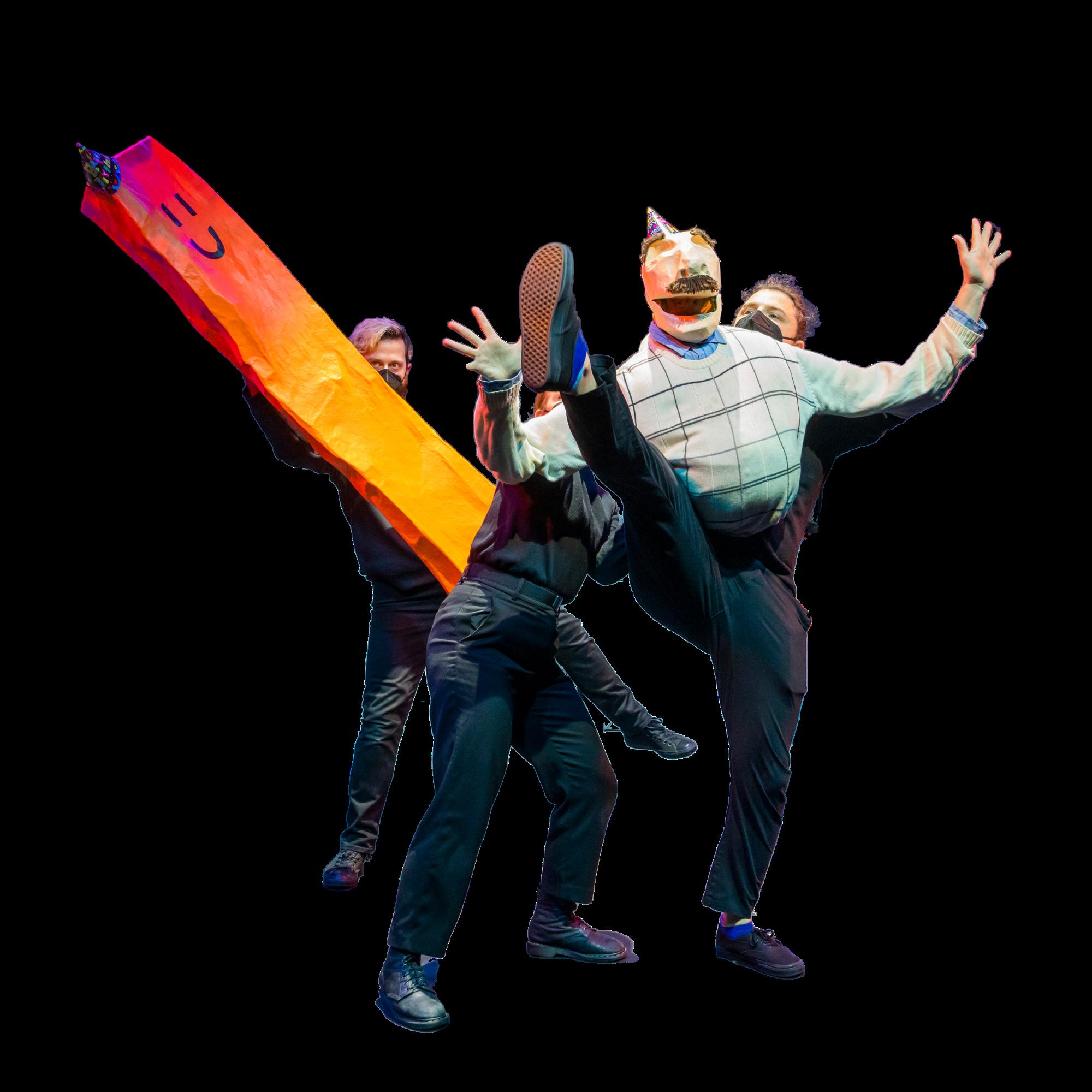

Sep 4 | 6:30 PM
Conjunto Breve




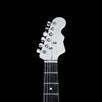
Free Concerts Every Wednesday in September
Sep 11 | 6:30 PM
Buckwheat Zydeco Jr. & The Legendary Ils Sont Partis Band
Sep 3—16 | Rubenstein Arts Center AS WATER FALLS
Sep 4 | American Tobacco Campus Conjunto Breve
Sep 5 | Page Auditorium Roy Wood Jr. & Jordan Klepper
Sep 7 | Baldwin Auditorium Tesla Quartet
Sep 11 | American Tobacco Campus Buckwheat Zydeco Jr. & The Legendary Ils Sont Partis Band
Sep 18 | American Tobacco Campus
Faith & Harmony / Dedicated Men of Zion
Sep 25 | American Tobacco Campus Music Maker Blues Revue
Sep 27—28 | Rubenstein Arts Center
Ayodele Casel: Rooted
Sep 29 | Baldwin Auditorium Schaghajegh Nosrati

Sep 18 | 6:30 PM
Faith & Harmony/ Dedicated Men of Zion
Sep 25 | 6:30 PM Music Maker Blues Revue

Oct 4—5 | Reynolds Industries Theater Fight Night: Ontroerend Goed
Oct 6 | Baldwin Auditorium Vesna Duo

Oct 10—Nov 7 | Duke Chapel Día de los Muertos Ofrenda
Oct 10 | Page Auditorium Music Maker Foundation: Celebrating 30 Years
Oct 19 | Page Auditorium
Blackburn Literary Festival Keynote with Rachel Kushner
Oct 25—26 | Rubenstein Arts Center
Bird-Watching: Pik-Kei Wong
Oct 27 | Baldwin Auditorium Modigliani Quartet
Oct 30 | Hayti Heritage Center Racine Nago
Nov 3 | Baldwin Auditorium Joyce Yang
Nov 7 | Duke Chapel Tenebrae
Nov 9 | Baldwin Auditorium Ciompi Quartet: Vienna to L.A.
Nov 15—16 | Reynolds Industries Theater Last Ward: Yaa Samar! Dance Theatre


Wu Han, piano
Nov 19 | Motorco Music Hall
Gabriel Kahane & Caroline Shaw: Hexagons
October 10 | 7:30 PM Page Auditorium
Featuring Taj Mahal, Dom Flemons, and Jackson Browne
The Music Maker Foundation Celebrating 30 Years concert features Taj Mahal, Dom Flemons, and Jackson Browne and many more in the American roots music industry.
Nov 22 | Page Auditorium Adrianne Lenker with special guest Suzanne Vallie
Dec 7 | Baldwin Auditorium VOCES8
Jan 18 | Duke Chapel Tonality: America Will Be
Jan 25—26 | Reynolds Industries Theater 32 Sounds: Sam Green
Jan 31 | Reynolds Industries Theater States of Hope: HopeBoykinDance
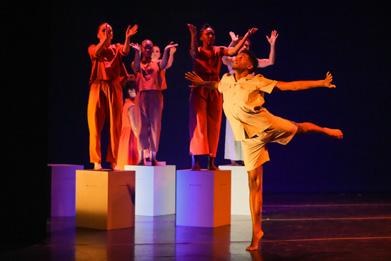

“The
Feb 7—8 | Rubenstein Arts Center An Oak Tree: Tim Crouch
Feb 14 | Reynolds Industries Theater Taylor Mac’s 24-Decade History of Popular Music: Screening
a irmation
is
and
be
Mar 1 | Baldwin Auditorium Goldmund Quartet
Mar 11 | Duke Chapel Thomanerchor Leipzig

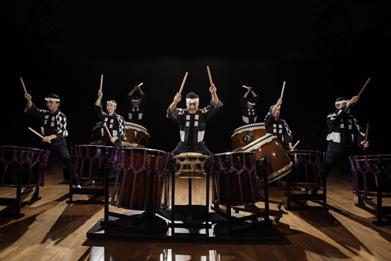
Feb 15 | Baldwin Auditorium Ciompi Quartet at Duke: A Collaboration
Feb 20 | Nelson Music Room Ensemble Intercolor
Feb 21 | Baldwin Auditorium Michelle Cann
Feb 28—Mar 2 | Rubenstein Arts Center Bill’s 44th
Mar 15 | Baldwin Auditorium Elias String Quartet
Mar 23 | Page Auditorium Kodo One Earth Tour 2025: Warabe
Mar 30 | Baldwin Auditorium Daniela Liebman
Apr 6 | Baldwin Auditorium Zodiac Trio
Apr 18 | Reynolds Industries Theater Meshell Ndegeocello – No More Water: The Gospel of James Baldwin
May 3 | Baldwin Auditorium Jerusalem Quartet

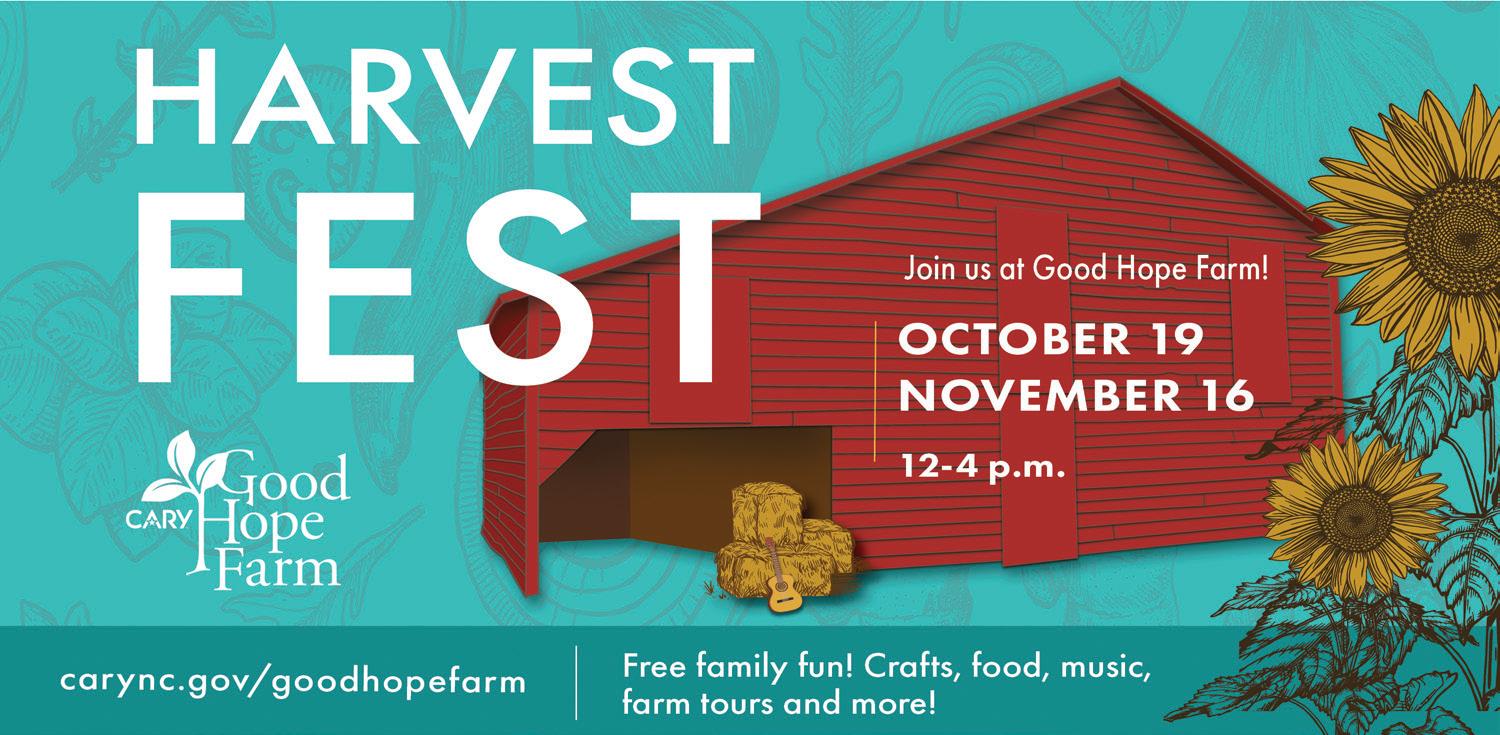


An artist’s home relaunches as community space Queen Street Magic Boat. An ambitious exhibition featuring twenty-two Triangle artists is its beginning point.
BY SARAH EDWARDS sedwards@indyweek.com
Over the years, Catherine Edgerton’s home at 406 North Queen Street has served as a kind of informal nerve center for Durham artists and organizers. A cheerful, canary-colored house a block from the county’s Main Library, it has welcomed musicians teaching drums, hosted lively banner-making events from organizations like Durham Beyond Policing and Jewish Voices for Peace, and served as a recuperative space for artists struggling with addiction and mental health issues.
Also: scuba diving classes.
When I first speak to Edgerton in late July, their boat is docking in Miami, skirting a tropical storm.
“It’s not even that the winds are that high, but they build up a lot of swell in the Gulf Stream,” Edgerton explains with a laugh. “So, the boat would be pitching from side to side.”
Since 2014, Edgerton, formerly of ramshackle folk outfit Midtown Dickens, has balanced a truly bohemian schedule—painting part-time and then working, for weeks-long stretches, as a cook on a scuba diving charter boat. When home, Edgerton, who has a scuba diving certification and is working on a captain’s license, brings marine life to Durham teaching scuba diving.
Talking about the classes, Edgerton lights up.
“When I started teaching diving, it was for people who have limited access, either cultural, financial, or physical, to diving and swimming,” Edgerton says. “We use it as a hub and through that process, recognize all these wild Black feminist and surrealist lessons that can come from immersion and trust-building and magic through diving.”
It’s been a fruitful era. Now, Edgerton says, it’s time to make things more official and reimagine the house as an

arts space: Queen Street Magic Boat, a “surrealist hub for building and sustaining visionary community connections through water, the arts, and wild imagination.”
That may sound amorphous and, as a DIY space, it is—by design: “I feel like it’s important to be fluid, no pun intended,” Edgerton says, adding that they want to be flexible to the community’s needs and wants.
Still, it’s evident that this is more than just a home with an open-door policy: now formally recognized with an LLC and fiscal sponsorship by Fractured Atlas, Queen Street Magic Boat is a practical space that reflects Edgerton’s and other community arts organizers’ decades of trying to work and live with integrity as artists in the area. That’s never been an easy mandate, but inflation, shrinking consumer budgets and attention spans, and the near impossibility of finding an affordable studio space—let alone an affordable home—have made things more difficult.
There’s a lot to contend with. An accessible community arts space, though, is a promising start.
“There’s a rich culture here amongst Durham artists and cultural workers,” says Edgerton, “who are pushing against, and asking important questions about, what an art space can be.”
Beginning in September, a sprawling, immersive exhibition will take over the rooms, outbuilding, and grounds of Queen Street Magic Boat. The commission-free exhibition is a partnership with Pop Box Gallery cofounders Laura Ritchie and Mavis Gragg and Gail Belvett, principal of organization The Art Chose Me. Entitled Death Planted a Garden, the exhibition offers a broad call to explore
the “loss of a loved one, a culture, an identity, a pet, a neighborhood, a potted fern, a coral reef” and features 22 Triangle multimedia artists.
One, Ivy Nicole-Jonét, is exhibiting a multimedia piece, “Ancestral Planes”—an immersive work that pulls together a mirror, projection-mapping software, and a documentary about North Carolina and Blackness alongside aromatic herbs from Nicole-Jonét’s grandmother’s garden into an ambitious portal to the past. A 2022 graduate of Duke University’s Experimental and Documentary Arts MFA program, Nicole-Jonét moved to the area during the thick of the pandemic and experienced, in short succession, the loss of her father and several close family members.
“It’s a shrine, but it’s also blending these realms into one space, and trying to imagine Blackness in spaces where we weren’t imagined before,” Nicole-Jonét explains. “I was trying to figure out ‘How do I grieve but still honor their legacy?’ I realized that memorizing them and holding their memory is still me having conversations with them.”
The exhibition’s run is a packed one: Launching September 6 with an opening reception, subsequent free programming includes a September 15 workspace for artists to learn “creative legal and psychiatric advance directives to advocate for themselves,” slow art walks, two artist talks, and more. Death Planted a Garden closes on October 20.
Like Nicole-Jonét, artist Destiny Hemphill is exhibiting a multimedia piece that activates the house—a site-specific installation, “wet nest of sweet rot,” that features a soundscape called “Grief Chatter.”
“It started as a way to metabolize grief because of the ways that mourning can exceed language,” Hemphill says
of the piece. “My primary tool is language, and I’ve been in a moment of feeling very languageless.”
It’s the first time Hemphill, a poet, has exhibited a visual piece.
“The relationships that I have and am growing with Catherine, Laura, Gail, Mavis, and the other artists who are being exhibited grounded me and encouraged me to take a risk,” Hemphill says. “The communal focus, versus a formal institution focus, is aligned with my ethos.”
“There are so many spaces that have been completely nebulous in the same way, before any of us,” Edgerton says. “It’s in the bones of the city.”
Edgerton is talking about Blind Boy Fuller, the renowned Wadesboro-born bluesman who made a living—and eventual legacy—busking by the American Tobacco warehouses, an area that, outside of institutional support and alongside the nearby Hayti District, became an animating force in Southern music.
We’re sitting in the front room of Queen Street Magic Boat—mostly empty, for the moment, save a small teetering table on which Ritchie and Edgerton have, with characteristic Southern hospitality, balanced a plate with crackers, pimento cheese, and
sliced peaches. They nod to the city’s lineage of experimental arts spaces, like early-aughts PeaceFire Gallery which exhibited work that “might not fall into easily recognizable categories,” per a 2006 INDY feature on the since-closed gallery. They say they’re energized by current arts spaces like NorthStar Church of the Arts, Night School Bar, and Perfect Lovers, as well as citywide efforts like the Durham Cultural Roadmap.
“We haven’t had one since 2004 and it’s a big deal for there to be resources and effort put toward creating a plan that protects our arts community and stewards it,” says Ritchie, a board member on the Cultural Advisory Board. “But it’s hard to continue waiting for that.”
Then there’s the Carrack Modern Art, the downtown art gallery that Ritchie cofounded, which hosted more than 1,000 visual artists and 150 exhibitions before it closed in 2019 following financial struggles. (The press release at the time cited “rising organizational costs, pressures to institutionalize, relocation away from downtown, and recognizing the dire necessity to pay staff fair, living wages.”)
Edgerton was one of the first artists to show work at the Carrack and describes the space as having balanced a DIY ethos with a “formality that felt legitimizing and an
important step forward in a career.”
“My experience there completely opened up this excitement about how artists could be empowered and cared for in a space,” Edgerton says, describing how The Carrack’s organized, artist-forward, zero-commission practices helped lay the groundwork for Queen Street Magic Boat.
When the Carrack was founded, in 2011— around the time that Edgerton purchased their home—Durham’s cost of living was a bit friendlier to experimentation.
“There was no question about whether you could be an artist,” Edgerton says. “Because it didn’t matter—it was affordable to be here.”
The 406 North Queen Street property cost $50,000 and the mortgage was $465 a month; upon purchase, Edgerton remembers their landlord casually expressing “veiled racist shit” about being glad Edgerton would be making the neighborhood, which was mostly Black at the time, better. That was a pivotal moment for Edgerton, who speaks candidly about the ways artists are used as “pawns for gentrification” by making lower-income communities more palatable to developers and new residents—a well-documented phenomenon that has repeatedly played out across the country and the Triangle.
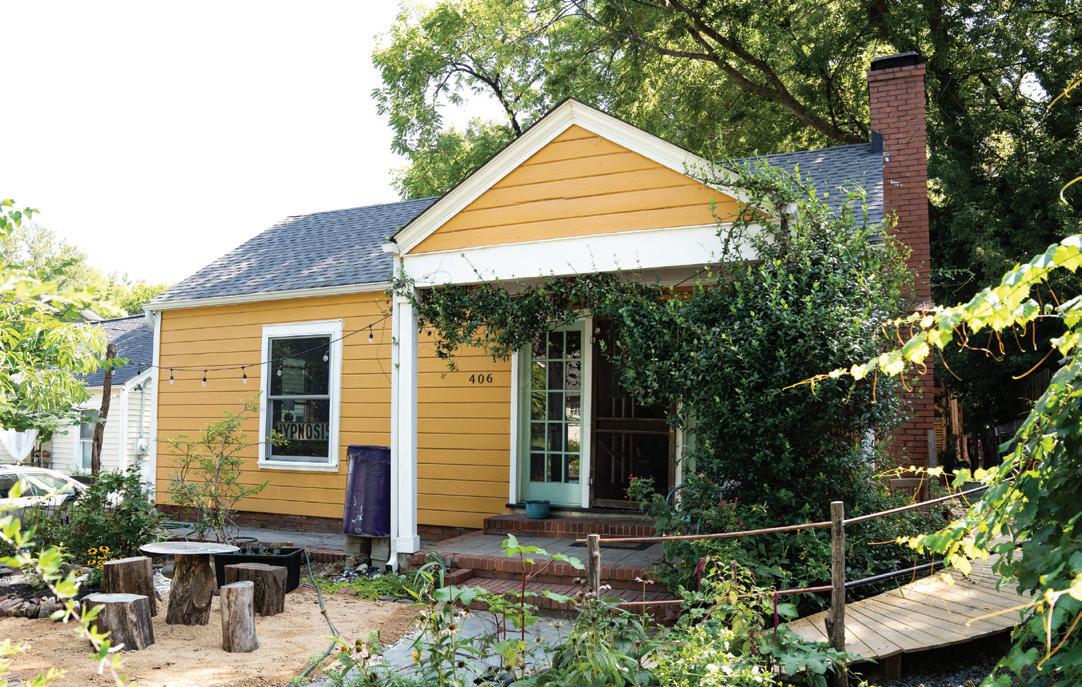
“Resourcing for artists, as in so many places, is challenging, especially in the face of escalating gentrification,” says Hemphill. “There’s a rich history of communal DIY spaces locally in Durham. There’s been several iterations of spaces like this—and nationally, globally, these spaces are increasingly harder to sustain because of the ravages of capitalism.”
“Artists are not the problem,” Ritchie says. “Art spaces are not the problem. But that speculation and circling that happens as a result—because something about our presence signals, ‘OK, now it’s your time to jump in here’—that’s the problem, because it does not actually involve the people who live in a place.”
Grappling with these realities, Edgerton says, they wanted to make a space “accessible for other people to do things that I was aligned with, believed in, which surrounded the arts and music.” With the opening of Queen Street Magic Boat, they’ve moved to a one-room unit in the backyard, making the house accessible to artists and organizers. Sculpted with handmade paintings and stained glass, the treehouse-esque unit fleshes out the “magic” part of the equation, with references to both a beloved past and a hopeful future.
“One thing that’s exciting to me about this space,” says Hemphill, “in terms of how it’s being tended to, is that it’s already embedded with rigor around artistic expression as political expression and exploring how artistic expression can unsettle.”
On the day I drop by, several weeks out from its opening, the house is lively with buckets of paint and plastic-wrapped canvases. Queen Street Magic Boat’s walls are still blank, though, save for one thing hanging: “Quiet Cartographies,” a map of Durham by public artist and city planner R Stein Wexler. On the map, the city’s roads are overlaid with the ghostly traces of one-time roads in Hayti—the flourishing Durham district named for the Republic of Haiti, the only nation borne from a successful Black slave revolt—razed in the construction of Highway 147 and the false promise of urban renewal. Attached to the map, lines of twine lead to index cards scribbled with memories of bygone places.
The tethered cards, though, do not gesture at constraint. Rather, they seem like a dialectical way to honor, to metabolize, and to move forward with the past.
Or as the curatorial statement for this inaugural exhibition puts it: “Despite (or because of) our grief, Death Planted a Garden reflects on the reverberations of severed connection—and the awakening to our inevitable place in the infinite salt water of things.”
From paintings from the Ottoman Empire to paintings of everyday neighborhood scenes, here are exhibitions to mark your calendar for.
BY SARAH EDWARDS AND TASSO HARTZOG arts@indyweek.com
Peel Gallery, Carrboro Aug. 21–Sep. 29
Wildly colorful bodies—made up of rakeshaped hands, elastic breasts, protruding nipples—cram and contour into the frames of Reneesha McCoy’s astonishing work. A self-taught artist, McCoy (also known as rnwulf) pursued a painting career after giving birth to her first child, and her work reflects the overwhelming, animating physicality of motherhood as well as the struggle of the self to exist outside that container. McCoy is an exceptionally gifted artist, and her paintings, at once conceptual and earthy, brim with feeling. The show began in late August but has a September 13 opening reception, timed to
the Second Friday ArtWalk, that includes a Super G Print Lab, refreshments, and live music. —SE
The Nasher Museum of Art, Durham Aug. 29, 2024–Jan. 5, 2025
The year 2016 may largely be remembered by its election, but another dark, era-defining event happened earlier that year: a working group of scientists convened in Norway officially declared, after years of deliberation, that we are living in a new geologic epoch distinct from the Holocene.

Although the fact of climate change has been known for some time, distinguishing one epoch from the next, ours—the Anthropocene, which began around 1950 and is defined by carbon emissions and nuclear testing fallout, among other things—gives shape to that change. The damage is shocking and not, by the prevailing curatorial Instagram ethos of our time, “aesthetic,” but as climate journalist Tatiana Schlossberg writes in a review of the exhibition catalogue, “Looking is hard; not looking will end up being harder.” Second Nature is the first major exhibition of contemporary photography to look at the Anthropocene head-on; we’re lucky to have it right in front of us. —SE
time as any to embrace ambiguity and take some time to listen. —SE
LUMP Gallery, Raleigh Sep. 7–Oct. 27
The days are contracting; fall is nigh. Maybe you’ve noticed your nervous system longing to let down its guard? Raleigh’s intimate LUMP Gallery invites viewers to step out of the sun and into an installation by multidisciplinary artist Chanelle Allesandre that weaves together “sound, flower essences, 35mm photography, poetry, and the live sculpting of an atavistic harp.” Collaborators Katie Addada Shlon and Ryan Martin join in, as do other local sound artists in performances that extend each weekend throughout the duration of September and October. In a sense / In essence extends a mysterious invitation to its audience to lean into the “subtle realms of feeling and vibration”; the changing of the seasons is as apt a
Craven Allen Gallery House of Frames, Durham Sep. 21–Nov. 2
Craven Allen Gallery has a quote from David Hockney—“If art isn’t playful, it’s nothing”—on the web page for Durham artist Rachel Campbell’s exhibition What You See From Here. It’s a congruous pairing. Like the populist Hockney, Campbell is a devout colorist and two-dimensional painter of everyday scenes: suburban lawns, hanging plants, a tablescape. Humans are usually absent from the New Zealand–born artist’s work, but as Campbell notes in an artist’s statement, “cherished details” (a leash, a coffee cup) give the impression that someone has just exited the frame, extending viewers playful permission to fill in their own associative blanks. —SE
The North Carolina Museum of Art, Raleigh Sep. 28, 2024–Jan. 5, 2025
J. D. Vance, the Republican nominee for vice president, has admitted to being “plugged into a lot of weird, right-wing subcultures,” including those whose adherents imagine themselves as righ-
teous warriors fighting to protect “western civilization” from a series of existential threats. Art history, being infinitely more wise than Vance and his network of paranoid white supremacists, attests to the fact that culture is born in translation and exchange across borders: Amedeo Modigliani and Pablo Picasso found inspiration in African art; early Greek sculptors learned from their Egyptian counterparts; the examples are endless. From this perspective, the North Carolina Museum of Art’s upcoming exhibition Venice and the Ottoman Empire offers, strangely enough, a timely corrective to some of the most ahistorical impulses in American politics. As this cross-cultural exhibition demonstrates, the Ottoman Empire and medieval Venice were Mediterranean superpowers whose artistic traditions can only be truly understood together. The story of their cultural exchange is told, in this threemonth exhibit, through 190 pieces drawn from the “vast collections of Venice’s storied civic museums.” —TH

Historic Stagville, Durham Nov. 16, 2024–Jan. 17, 2025
Historic Stagville, located about 20 minutes north of downtown Durham, was once one of the largest plantations in North Carolina. This fall, Stagville—once a site where more than 900 people were
enslaved between 1771 and 1865—will feature an interactive installation by artist and educator Maya Freelon. The installation includes 20 photographs of enslaved children, whose portraits are overlaid with swirls of colors and texture using Freelon’s “bleeding” tissue technique, as if emerging from some wrinkle in time. Freelon is one of two 2024 Artist/Scholars in Residence at the Library of Congress, from where these photographs are sourced. This powerful archival tribute, as Freelon says, is a way to “shine a light on a subject often ignored and reclaim a space that was once used to disempower and oppress.” Exhibition hours at the historic site may vary, but it’s well worth the research and the drive—Freelon’s captivating work is both an invitation and an imperative. —SE
Cassilhaus, Durham ongoing
Nestled into a wooded hillside west of Durham, Cassilhaus is a unique art space dreamed up, designed, and realized by architect Ellen Cassilly and retired AV designer Frank Konhaus. The structure, itself a work of art, includes a home for Cassilly and Konhaus (Cassilhaus is a portmanteau of their names); exhibition space for a photography-focused permanent collection boasting works by Sally Mann and Alec Soth, among others; and an attached guesthouse/studio that hosts a multidisciplinary residency program. This fall, the studio is home to Durham quilter and ceramicist Kimberly Pierce Cartwright. In the past, the residency has hosted poets, choreographers, and painters. The gallery equivalent of a really good restaurant with a tiny dining room, Cassilhaus has limited capacity and requires RSVPs. Join the mailing list: it’s the only way to hear about upcoming events and programming. —TH W












Durham artist Ellen O’Grady shares stories of grief, protest, and hope in her comics about Palestine.
BY TASSO HARTZOG arts@indyweek.com
Ellen O’Grady ended up in Palestine almost by accident. It was 1989, she was a religious studies major at Hamilton College, and she wanted to study abroad in Nepal. Her parents vetoed the plan: too dangerous, they said. When she proposed Jerusalem instead, in hopes of “making Nepal look safe,” her parents were surprisingly enthusiastic, and she soon found herself at Tantur Ecumenical Institute in East Jerusalem—part of the West Bank that the Israeli military has occupied since 1967.
Before landing in Jerusalem, O’Grady only knew as much as the average American about Palestine: “very little,” as she tells me from her home in Durham, where she works as an artist. (Despite the volume of recent media coverage—or maybe because of it—American ignorance persists: a Pew Research Center survey from earlier this year found that only 52 percent of Americans correctly identified that more Palestinians than Israelis had been killed during the ongoing war in Gaza; when the survey was conducted, the numbers of deaths were about 30,000 and 1,200, respectively.)
Over the course of that semester in Jerusalem in 1989, O’Grady’s understanding of the world and her place in it changed utterly. The experience was so profound that she returned to Palestine after graduating from college—and then decided to stay for seven more years, working at a number of aid organizations and schools in Gaza and the West Bank.
O’Grady first arrived at Tantur Ecumenical Institute amid the first intifada—“uprising,” in Arabic—during which thousands of Palestinians protested the Israeli occupation. Two weeks into her time there, while she and a group of classmates were returning from a visit to a rehabilitation center in Bethlehem, Israeli security forces ordered a curfew. She watched a soldier take a knee and aim his gun at a group of Palestinian children throwing stones in defiance of the order, she says. The soldier lowered his gun only when one of her classmates yelled, “Stop!”
This story appears in illustrated, paneled form at the beginning of O’Grady’s new 40-page book, How Are We
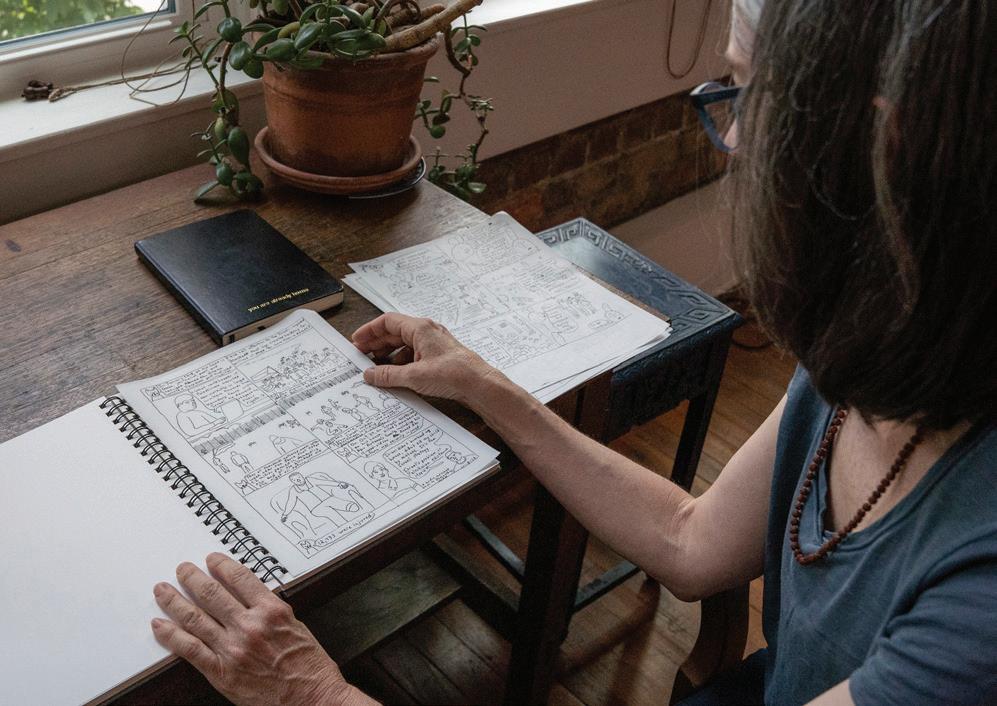
to Live? Comics for a Free Palestine, from Paper City Publishing. (The first printing is sold out, but a second is forthcoming; all proceeds have and will continue to be donated to organizations supporting those affected by the war in Gaza.) For nearly a year now, since October 7, O’Grady has been drawing comics about Palestine almost every morning. She sits down with pen and paper “like people go to the yoga mat” and, over a series of square panels, gives form to the “horror and grief” that the war in Gaza has wrought.
In her comics, O’Grady covers a range of subjects. Sometimes she writes about history and media criticism. Other times she illustrates a poem written by a Palestinian poet. Sometimes, on the worst days, her comics are obituaries: “Hashem Ghazal, an old friend, was killed today along with his wife,” O’Grady wrote on May 14. “Seven of his children were severely injured.” Ghazal was her colleague at the Atfaluna School for the Deaf in Gaza, where she worked in the 1990s. Though these words had no accompanying illustrations, O’Grady still drew a panel around them: letters trapped inside a black box.
The grief of losing dear friends, of losing a “most beautiful place” that was once her home, has been alienating for O’Grady. She explains her perception of the world these past few months as a kind of “split screen”: “I’m seeing or hearing what’s happening here,” she says, “and then I’m seeing what’s happening in Gaza.”
It’s such a frightening image—a sunny summer day in Durham on the left, rubble and smoke and screams on the right—in part because it so accurately reflects the fractured reality of our digital lives. We wake up, tap through images of unspeakable violence, and then eat breakfast. As Susan Sontag wrote in an essay on wartime photography during the early years of the war in Iraq, “The leaching out of content is what contributes most to the deadening of feeling.”
How are we to bear witness to suffering while also preserving our capacity to feel? Or in O’Grady’s words, “How are we to live in this world?”
Perhaps through art, poetry, and even comics—all the things that deepen our humanity rather than deaden it, that allow us to remember that, as O’Grady writes, “under the anguish is love.” Even when they depict hollowed-out apartment buildings, O’Grady’s drawings have the warmth and reassurance of a human hand. Her comics are a bulwark against numbness and alienation.
“I don’t want people to feel so alone,” she told me, “and I don’t want to feel so alone.”
A longtime comics reader—she lists John Porcellino, Lauren R. Weinstein, and Joe Sacco as a few of her favorites—O’Grady began drawing her own after a friend gave her Lynda Barry’s book Syllabus. During the pandemic, she posted daily diary comics on Instagram and Patreon. “Through the practice of noticing—not just noticing, but
drawing these small, beautiful moments,” she says, “my life became more beautiful.”
In 2022, O’Grady published Magic Nation #1, a watercolored memoir comic about bugs, memory, and imagination that thrums with love for the world. Since October 7, her focus has shifted almost entirely to Palestine, but the spirit of her earlier comics has remained.
To begin to convey the incomprehensible scale of the tragedy in Gaza, she zooms in on a person, a story, and then extrapolates outward. Her eye will catch on something small, fragile, fleeting—the foot of a bird on a branch—before, a few panels later, zooming out and prompting her readers to wonder how many birds on branches have endured the air strikes.
O’Grady believes that a story is a “bridge” that permits us movement into the lives of others. One particularly memorable comic in How Are We to Live? relates a conversation with her 94-year-old mother. O’Grady’s mother asks for advice about how to navigate a dinner with friends who might not share her perspective on the war. “Just tell your stories,” O’Grady says to her. “They are powerful and sweet and human. You’re not claiming to know everything.”
O’Grady is not claiming to know everything, either, but she hopes that her work will find readers who “may not know anyone else who lived in Palestine, and may not know who to trust.” “If they trust me a little bit,” she says, “then I have a responsibility.”
When I ask about her sense of responsibility, O’Grady tells me a story. She speaks carefully and with her eyes closed.
A few weeks after she first arrived in Jerusalem, a young Palestinian boy that she knew from her trips between Tantur and Bethlehem was killed in a clash with Israeli soldiers. Returning one day from the rehabilitation center, she ran into a friend of the dead child. The boy was agitated and trying to show her something. He handed her a metal canister and pointed to a label that read, “Made in Saltsburg, PA”—the longtime home of Federal Laboratories, a weapons manufacturer that supplied Israel with riot guns, tear gas, and other munitions.
In that moment, the distance between Palestine and O’Grady’s life in the United States shrank considerably. That label—a tiny symbol of the global economy of war— set in motion the next seven years of her life. “I thought at that point, ‘I need to come back,’” she tells me. “And then I did.”
For all its heaviness, How Are We to Live ends on an image of weightlessness and hope. On the back cover is one last comic, different from all the rest. The vague form of a woman with her head in her hands—a woman saying to herself, “It’s unbearable”— slowly transforms into a swarm of jellyfish. The hard lines grow soft. In the final panel, the jellyfish are floating up—“being borne”—toward the sun. W


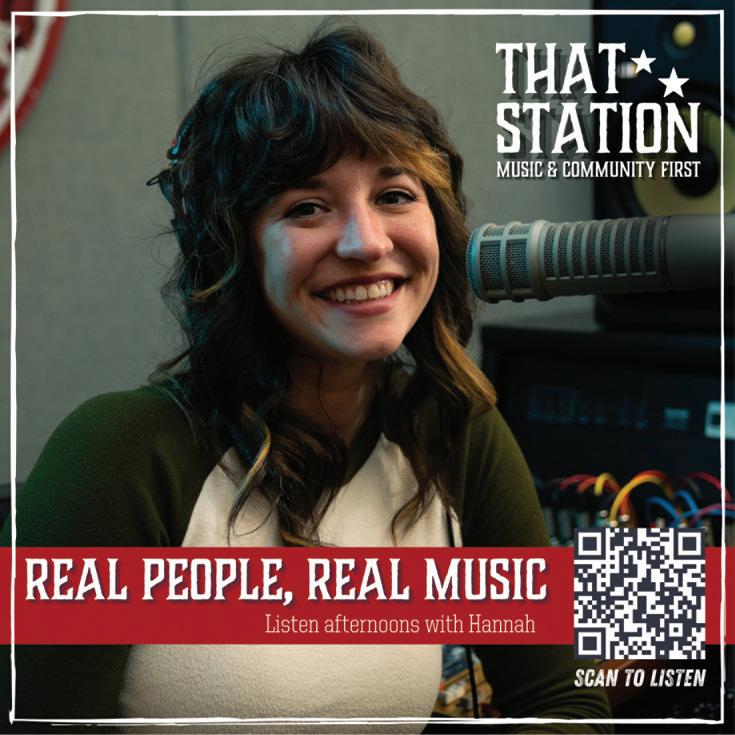
Talking
artist
BY CHASE PELLEGRINI DE PAUR chase@indyweek.com

In a saga that has spanned four governors, a great recession, and a pandemic, the City of Oaks is finally gaining the grand park it deserves. When Gipson Play Plaza at Dorothea Dix Park in Raleigh opens in 2025, it will mark a major step in the realization of a vision over 20 years in the making.
But at the entrance to this future site of grass, flowers, and frolicking happy children stand two unforgiving steel structures: Duke Energy’s power poles. Each like a reallife Eye of Sauron, the utilitarian steel poles seem to suck the very joy out of the surrounding landscape. They can’t be moved—they and the land around them are owned by Duke Energy, not the city—and their sheer size means they can’t be ignored.
So when renowned Raleigh sculptor and painter Thomas Sayre was approached about turning the poles into giant sunflowers, he saw the challenge as an opportunity to turn the soulless into the spirited. Sayre has previously worked with tar, smoke, gunshots, welding material, earth, and fire, but never before has he collaborated with a team of Duke Energy engineers. When they’re unveiled this fall, Sayre hopes his metal sunflowers will be as delicate and awe-inspiring as the organic sunflowers that have come to symbolize Dix Park.
INDY: You’ve mentioned the idea of “creative infrastructure.” What does that mean?
THOMAS SAYRE: I make a living all over the country and beyond doing public work, public art, such as the Shimmer Wall downtown, or the earth-cast rings at the North Carolina Museum of Art (NCMA). You come upon [the rings]
on the bike path, and you think, especially in a museum, “Oh, this is art.” But as a society, we build a lot of stuff: bridges, roads, power poles, and other things that sometimes sink to a kind of prosaic utilitarian level. Does it have to be that way all the time? And I think the answer of the sunflowers is that it doesn’t.
Tell me a little bit about just the process of turning these two poles into sunflowers.
Well, go look at a power pole, especially a big one.
OK, I’m staring at a telephone pole outside my window right now.
What does it look like?
It looks like a big piece of wood with some metal pieces sticking out of it and some wires running through it.
OK. Well, that’s a pretty simple one, not high-voltage like the [Dix Park poles]. The way you transmit electricity is through three wires. When you’re transmitting, when you’re going a long distance, they break it apart into three phases. And that’s called three-phase power. Three-phase power is three sine waves that are 90 degrees out of phase. I could draw it for you really easily, but you’re just gonna have to imagine. The reason I’m telling you this is because on the petals themselves are perforations which depict the science of how three-phase power transmits across the landscape via power poles.
If you were in a drone looking straight at the petals, if they were flattened out, you would see vividly these sine waves going around the circle, three sine waves that are out of phase by 90 degrees with each other. You’ll never see that from the ground because the petals are bent and leaning back and forth and twisting around, but there will be a plaque, I’m sure, that explains the science of this, which was very appealing to the Duke Energy engineers, who are real proud of electricity. We are expressing a little of the science of power transmission, but we’re also making this very delicate looking, like a flower is. How ironic to convert this prosaic structure into a flower. Duke Energy has all kinds of rules. The three wires have to be no closer than a very prescribed distance. And above the wires is a lightning wire that has to be a very prescribed distance, and the geometric relationship of the wires to the ground and to anything near them is all completely prescribed, and there’s no negotiation.
It was me and seven engineers. And at first their response was “No, hell no,” about everything. And I had to, you know, be persuasive and say, “Here’s how we can do it, based on your own rules.” And eventually they got won over.
The whole structure is a gigantic footing, 18 feet deep for each, and bolted into that footing is a big tapered pole that, then, the top of which receives a ring something like 20 feet in diameter.
Outward from that ring are 46 petals per sunflower. The petals structurally are each a two-inch pipe, which bolts to a bracket on the outside of this ring. And then bolted
to that two-inch pipe is a folded cutout of stainless steel petal. Each one is in a different position, like in nature.
You’ve done a lot of work in Raleigh, where you live. Your piece outside the NCMA has even become the logo for the museum. Do you approach projects in Raleigh differently than you approach projects in other parts of the world?
The answer is yes and no. The approach isn’t different. I try to listen to the land, listen to the community, and understand the place where the project is, whether I’m in Thailand or California or Calgary, Canada. Since I have lived in Raleigh for a number of decades now, I do know this place pretty well, and that helps. When you work in Thailand, you swoop in for a while and get what you can get and go back and forth, but it’s not the same as living there.
Sometimes an outside person can see and sense things that a native can’t, you know; you can’t be a prophet in your own land, but you can be a prophet in somebody else’s land. Of all the ones, the dozens I’ve done all over the world, some of my favorite pieces are here, because I can see what they’re doing and how they’re working and that people, after years, continue to get something out [of them].
Are there any other works, either by you or by others, that you feel these sunflower poles particularly engage with, build on, or converse with?
When Duke was approached about making sunflower power poles, they immediately said, “Oh, you mean, like the Mickey Mouse ears in Orlando, Florida?” There is a power pole there that has the circle and the two ears. The sunflowers are much more complicated and, I would say, more visually striking than that. I think there’s another power pole project near a big NFL site in the Midwest that is a goalpost. But in terms of engineering and visual complexity, the Mickey Mouse ears and the goalpost are just way simpler than two sunflowers with 46 petals each.
I’m looking at the Mickey Mouse ears, and it’s a little more dystopian.
It’s not my fave.
Is there anything that I didn’t ask that’s important to know for this story and this project?
There’s a uniqueness to this project. It’s different because it has to conform to all the Duke rules. It’s an incredibly narrow wicket, creatively, to have to go through. Now, is it more or less creative? I don’t know. If I was approached as a sculptor—“Hey, what would you do here at the same site?”—I’d have a very different response.


It’s just a different enterprise. And because of these seven engineers and all their well-founded hesitancy, because their responsibility is to keep the public safe, I think a lot of artists would just freak out and say this is cramping my creative self.
I see it more like the difference between free verse and sonnets in poetry. Sonnets are very prescribed—here’s a formula—versus free verse, where there are no rules. This is much more like a sonnet. Is free verse more or less creative than a sonnet? I don’t think so, but they are very different, and they express different things. W
This interview has been edited and condensed for clarity. Visit our website to read the full version of this article.









The festival business isn’t easy. Fourteen years in, Hopscotch’s curatorial blend of new and legacy acts keeps the festival moored.
BY JORDAN LAWRENCE music@indyweek.com
Back in 2016, the paper I was writing for in South Carolina assembled a list of “15 Regional Music Festivals That Have the Goods,” selecting a list of mostly indie rock celebrations we felt were truly succeeding.
Looking back from 2024, five of those festivals—Winston-Salem’s Phuzz Phest, Charleston’s Southern Ground, Charlotte’s Carolina Rebellion, Atlanta’s Shaky Beats, and Durham’s Art of Cool Festival—have permanently canceled all or large parts of their programming.
Maintaining a music festival and evolving its perspective over time is hard. Your initial audience keeps aging, meaning you need to pull in younger people to replenish your crowd as former regulars tire of hoofing it to catch a multitude of acts playing in conditions that are often hectic and at the whim of the elements.
In the case of a festival like Raleigh’s Hopscotch—which built its success on an adventurous curation of far-flung smaller acts anchored by headliners that often skew toward indie rock legacy acts—organizers are tasked with maintaining a balance of emerging acts (to drive a sense that audiences are experiencing something fresh and exciting) and compelling luminaries (to give attendees the nostalgia hit that keeps them coming back for more).
Both of those marks keep changing as time marches on. Hopscotch crowned its first festival in 2010 with hiphop powerhouse Public Enemy, at that moment about a decade and a half removed from their revolutionary early-’90s prime. Booking them today would likely still generate excitement, but would they be received with the same triumphant glee that greeted them 14 years ago?
Topped by some seriously big indie rock headliners in the here and now (Waxahatchee and St. Vincent), zeroing in once again on a hugely exciting legacy act (The Jesus Lizard, who are set to release their first album in 24 years the week after Hopscotch), and including exciting forays into other territory (rapper JPEGMAFIA and Zamrock legends WITCH), the marquee slots on this year’s lineup keep Hopscotch headed in the direction you’d expect, with a litany of smaller acts that further back that up.



Evolving the festival over time while maintaining its identity is a daunting task. But it’s one that Hopscotch director Nathan Price says he isn’t sweating as the event approaches its 2024 outing September 5-7, bringing nearly 130 acts to two outdoor main stages and eight club spaces in downtown Raleigh.
“I guess we’re kind of lucky in that I haven’t really thought about that even a little bit,” says Price, who’s headed up booking for the festival since 2014. “It’s mostly just we’re booking the bands that are exciting to us, new or old. That’s pretty much how I’ve always done it.”
But that doesn’t mean Price and his team don’t think hard about whom they’re booking and how they work together. One of Hopscotch’s strengths through the years has been the way it books older acts and newer acts in conversation, showcasing the way musical trends evolve. And that was certainly on organizers’ minds again this year.
“It’s just wanting to make it as well-rounded as possible,” Price says. “Two of the most exciting spots that we have for that are Ducks Ltd. going into The dB’s, which is kind of like new power pop into classic power pop. Once we realized that we could do that, it seemed like it’d be fun. And then that Pylon [Reenactment Society] bill on Saturday night with Exercise and some of the locals is kind of fun. We were looking at it, we were like, ‘Man, there’s like a million young bands that could fit perfectly on this.’”
But finding the headlining acts to anchor your festival lineup can be challenging.
Aaron Greenwald worked previously as the managing






director for Knoxville’s Big Ears Festival, which collides more traditional festival sounds like indie rock and hip-hop with far-reaching experimental acts and modern classical. He says that with monolithic industry titan Live Nation gobbling up many of the biggest acts, the selection of workable options can be slim.
At the same time, the mechanics of a festival allow for more creative avenues to solve this problem.
“You’ve historically seen more creativity in the festival business,” Greenwald says. “The festival model is not based on ‘How much money can I potentially make on this artist on a given night?’ Your revenue sources are aggregated from ticket sales plus sponsorship plus food and drink plus merch. I think the popular festival model brings several additional sources of revenue to the table so that a booker can pay more than they would If they were presenting a single artist.”
At the same time, as Greenwald points out, the need to end up in the black to make a festival feasible in an ongoing capacity can stymie creativity. It’s a challenge that Price acknowledges.
Hopscotch started out losing money, emerging as an experiment put on by this very paper to see if a huge, stylistically far-reaching music festival was possible in downtown Raleigh. Hopscotch can’t run that way anymore.
“I don’t know that the goal in the early years was ever to not make money,” Price says. “It was attached to another business that was kind of creatively trying to push something for the city. And now it’s on its own. It’s not attached
to anything. And we do, unfortunately, have to look at some things that aren’t just artistic. We have to hopefully sell some tickets.”
“It’s tough,” Price continues, “because we don’t get city funding. A lot of the other festivals in the area get a lot of support in different ways, whether it be people from the city helping or something like that. We’ve just never been able to sustain that in the same way. In some ways, it feels like it’s all on us to make it happen.”
they often come cheaper than newer acts that are cusping toward larger popularity.
“[There are] bands I’ve made inquiries to—either immediately prior to my inquiry or immediately after, they’ve all kind of reached a level that it’s just not in our budget. It would eat our entire artist budget to do it, or 80 percent,” Lofton says.
Price feels lucky that Hopscotch established a balance between newer and older acts early on so that he can turn his energy
“It’s tough because we don’t get city funding…We’ve just never been able to sustain that in the same way. In some ways, it feels like it’s all on us to make it happen.”
Considerations of dollars and cents can make it hard to balance newer and older acts.
Trey Lofton books the Jam Room Music Festival in Columbia, South Carolina, which, like Hopscotch, is a largely indie rock event seeking to balance emerging acts with impressive legacy pulls—albeit on a smaller scale and without charging for admission.
Several top-line legacy acts from Hopscotch’s past have played Jam Room—Tortoise, Superchunk, and Guided by Voices among them. Lofton says a big reason why the festival frequently leans on such acts is
toward evolving that approach over time. But some things have changed as he’s brought Hopscotch along—such as booking headliners the event has booked before, as it did this year with St. Vincent, Waxahatachee, Wednesday, MJ Lenderman, and Guided by Voices.
Tracking the evolution of artists that organizers and audiences enjoy has become part of Hopscotch’s spirit, balanced by a continued sense of adventure across the rest of the lineup.
“We don’t do quite the same thing as we always used to,” Price says. W












Making our way through this year’s windswept rock, conversational rap, sparkling Zamrock, deadpan humor, and more.
BY JORDAN LAWRENCE music@indyweek.com
The best part about choosing your own adventure amid the myriad options presented by Raleigh’s Hopscotch Music Festival each year is the thematic connections and stylistic through lines binding the lineup. And such is the case, once more, with the attentive curation behind this year’s nearly 130 acts coming to two outdoor main stages and eight club spaces September 5–7.
The connections between the acts provide new ways to consider music you already love and context to appreciate the new sounds you discover along the way. Here are a few themes you can look out for as you journey through this year’s Hopscotch.
Top-line trio dissects indie rock’s last decade
This is obvious advice, but don’t skip the top-line acts at this year’s Hopscotch.
St. Vincent (9:30 p.m., Saturday, City Plaza), Waxahatchee (9:30 p.m., Thursday, City Plaza), and Faye Webster (9:30 p.m., Friday, City Plaza) offer glimpses of how the dominant trends among indie rock singer-songwriters have shifted across the last decade.
St. Vincent arrives having shown herself to still be in firm command of her signature powers on this year’s alternately slinking and thundering All Born Screaming, an album that conjures wide-screen Bond theme theatrics, twilit radio pop, and defiantly angular art rock with equal assurance. St. Vincent emerged in the late aughts when insistent stylization dominated much of indie rock—years later, she still does it better than pretty much anybody. Waxahatchee puts a bow on a more recent era with this year’s triumphant
Tiger’s Blood, her bend-don’tbreak emotionalism spirited forth by windswept rock with deep ’70s roots as she delivers tunes that were readymade for shout-alongs at a music festival as 30-somethings “roll around in the disarray / In the final act of the good old days.”
And Webster shines as a low-key beacon of what’s taking hold. On this year’s Undressed at the Symphony, her confessionals meander through hazy contours, not quite laconic but never hectic. “I want to see you in my dreams but then forget / We’re meant to be but not yet,” she moans on the ornately evocative “But Not Kiss.” Her music feels like the sound of an emerging present.
Past hallmarks, both obvious and less so
At Hopscotch, the selection of legacy acts continues to feel especially thoughtful.
This year, you get expected indie rock luminaries in Guided by Voices (7:30 p.m., Saturday, City Plaza) and The Jesus Lizard (8:30 p.m., Saturday, Moore Square). Coming two days into a festival filled with acts that have felt the influence of these big names should, as ever, serve as a fascinating lens through which to consider them once more.
And it’s thrilling to have them here. GBV return to the festival as they continue their unstoppable onslaught of fuzzy, classic-minded garage rock with this year’s aptly titled Strut of Kings, the Ohio group’s 24th album since returning from an eightyear hiatus in 2012. The Jesus Lizard hit Hopscotch amid their second reunion since



initially disbanding in 1999, this time rekindling their distinctly twisting and ranting post-hardcore fire with Rack, their first album since 1998.
But Hopscotch also emphasizes legacies that aren’t so widely remembered. Getting to see the swaggering, swaying, and sparkling Zamrock of ’70s-born Zambian band WITCH (Saturday, 12:30 a.m., Lincoln Theatre) in the festival’s largest club space is one of this year’s most appealing opportunities, while bringing North Carolina power pop forerunners The dB’s (Saturday, 3:15 p.m., Moore Square) to a main stage is Hopscotch’s latest earnest embrace of local music history.
Hopscotch’s forays into hip-hop, R&B, and reggae have been inconsistent at best, but this year’s lineup brings exciting acts at pretty much every level.
On one of the main stages, there’s rapper JPEGMAFIA’s slyly murmured and hollered Rorschach tests of confrontational verses and colliding musical styles (8:30 p.m., Thursday, Moore Square), as well as the scuzzy but erudite Previous Industries (a trio comprised of rappers Open Mike Eagle, Video Dave) (5 p.m., Thursday, Moore Square).
And in the clubs there are highlights such as prolific, long-standing, and eternally restless reggae experimentalist Scientist (a.k.a.
producer Hopeton Brown) (10:30 p.m., Saturday, Lincoln Theatre); blearily experimental and devastatingly expressive R&B singer Niecy Blues (midnight, Friday, Nash Hall); and keenly charismatic and conversational rapper and producer Lord Jah-Monte Ogbon (10:30 p.m., Friday, Transfer Co. Ballroom). Hopscotch has been criticized in the past for lacking commitment to these genres, and while the festival remains anchored by indie rock, it’s clear organizers are making an effort.
For the second year in a row, Hopscotch will pack Lincoln Theatre for Thursday night with comedy, keying on a lineup that will push the stylistic boundaries of comedy with the patient, gravelly deadpan of headliner Joe Pera (12:20 a.m.) and the self-deprecating whimsy of Katie Hughes (11 p.m.) and eight more.
Multitalented comedian and actor Tim Heidecker (5:45 p.m., Thursday, City Plaza) plays a main stage the same night, playing warm indie rock that turns a wry eye to existential insecurities. “Words don’t come / Like they did when I was young / And I don’t know why / This well’s running dry,” he sings on the lead single to his forthcoming new album Slipping Away. It’s hard to be funny all the time.
Bounce between City Plaza and Lincoln Theatre Thursday to contemplate the role of humor in comedy and beyond. W
9/12
9/14 SAT Bloomsday / Mali Velasquez W/ ANNE MALIN
9/18 WED Sad Park W/ YUNGATITA, BOY NAMED SUE, OBJECTIONABLEPANIC OR DIE
9/24 TUE Rosie Tucker W/ TRIPPERS & ASKERS
9/28 SAT Abby Holliday W/ BROTHER BIRD,
10/2
10/5

9/10 TUE Shawn James W/ HARLEY POE
9/11 WED Jackie Greene W/ MICHAEL PAUL LAWSON
9/15 SUN Susan Werner
9/22 SUN My Brightest Diamond W/ NOIA
9/26 THU Tinder Live with Lane Moore
10/2 WED Ben Sollee
10/5 SAT Sarah Kinsley W/ HA VAY
10/12
10/13

Dana and Alden W/ LARGE BRUSH COLLECTION
Cool Cool Cool
10/16 WED Slenderbodies W/ TIM ATLAS
10/17 THU Joe P W/ ANNA SHOEMAKER
10/21 MON John Early
10/22 TUE Sunset Rubdown W/ SISTER RAY
10/24 THU Chris Knight W/ MIC HARRISON AND THE HIGH SCORE
10/25 FRI Deer Tick
10/26 SAT Slift W/ MEATBODIES
10/27
10/28
10/29
Tilian W/ AMARIONETTE, AUTUMN KINGS
Cursive W/ GLADIE
Pokey LaFarge W/ TAILSPINS
11/2 SAT Hockey Dad / Remo Drive W/ WEAKENED FRIENDS
11/3 SUN Drug Church W/ MODERN COLOR, SOUL BLIND, PONY
11/14 THU Adeem The Artist W/ SUG DANIELS
11/20 WED Lo Moon
11/21 THU Boyscott W/ SMALL CRUSH
11/27 WED Dance with The Dead W/ KORINE
11/30 SAT Will Wood
12/6 FR Susto W/ HOLLER CHOIR
12/8 SUN The Bygones W/ EMMA HARNER
12/17 TUE Tiny Moving Parts W/ ACTION/ADVENTURE, GREYWIND
12/21 SAT Everything Yes
1/31/2025 FRI Sungazer
2/8/2025
506
9/10 TUE Shing02 / OMA
9/25 WED Goatwhore W/ VITRIOL, NECROFIER
10/13 SUN Woods W/ JOHN ANDREWS AND THE YAWNS
10/19 SAT A Country Western W/ CHARLIE PASO, LITTLE CHAIR
10/22 TUE Apes of The State W/ ENDLESS MIKE AND THE BEAGLE CLUB, RUMBLETRAMP, BOYGIRL RISING
10/25 FRI Phantom Planet W/ RANGE LIFE
10/29 TUE J. Robbins (band) / War On Women W/ BATS & MICE
11/15 FRI Trash Boat W/ DOWNSWING,
10/9 WED Armchair Boogie W/ LIAM PURCELL & CANE MILL ROAD



Mx Lonely W/ BLUEGILL, NOT FLAILING
10/17 TU Wine Lips
10/24 THU Rozwell Kid W/ RODEO BOYS, THE DREADED LARAMIE 10/29 TUE Hello Mary W/ BLEARY EYED 11/19 TUE Hayden Pedigo
2/17/2025











North Carolina musician Indigo De Souza talks Hopscotch, practicing gratitude, and finding online community.
BY SARAH EDWARDS sedwards@indyweek.com
Indigo De Souza’s music feels made for Hopscotch: it’s casually crunchy and catchy, roving between winsome self-reflection to no-holds-barred, cathartic grunge pop, all underwritten with earnest, polished songwriting. The Asheville native swings through the Triangle often, either to see friends or record at Betty’s in Chapel Hill; she’s also played a few times at Hopscotch, her name growing slightly bigger on the bill every year.
This year, with 2023’s standout All of This Will End behind her and a new record out in 2025 (and an EP out in the very near future), her name hovers just below St. Vincent’s on the billing. She’ll also lead movement-building festival CAROLINADAZE’s Asheville show with a solo October performance. Hopscotch, she tells the INDY, “feels a bit like being home” and is an “amazing way to interact with the city.” Ahead of those two shows, De Souza spoke with the INDY about growing up in Asheville and building community.
INDY: What made you want to participate in CAROLINADAZE?
De Souza: Oh, it just felt like an important way to be a part of my community, and I got excited that it’s in my hometown—I don’t get to perform here very often. It seemed like a sweet opportunity. But I’m also nervous about it because I don’t play solo.
Asheville’s a special place—how did growing up in the area inform your artistic sensibility?
It was really important moving from Spruce Pine to Asheville, because there are a lot more people playing music in Asheville. I think of all the connections I’ve made musically and professionally over the years and how important they’ve been. Especially when I was in high school, meeting the people I started playing in a band with—that was important and shaped me a lot. My mom grew up in the area; I’m very grateful for it. Asheville is small and tight-





knit, but it’s really rich with people that are talented and have a lot of passion.
I saw that you recently purchased land around Asheville—that’s so exciting. What’s your vision around it like?
Thank you! Mostly, since I was little, I’ve had a vision for a space for my community, where I can offer them a space to be free, if that makes sense, just to be themselves and open to nature and connecting with each other. My main goal with it is just to have a community space and to make it feel open and homey to my friends. I hope someday to be growing vegetables out there and living with a few friends and having gatherings.
You’ve mentioned community several times— how do you stay connected with it when you’re touring?
I don’t know—it’s hard to travel and be away from home, for sure. This might sound cheesy but I’m grateful for Instagram. I feel like it allows me to connect with my community wherever I am—and also my online community, which feels important too. And then I’m just really proactive about having phone calls with all my friends and keeping up with them while I’m gone.
When you say “online community,” do you mean fans?
Yeah, fans, people who follow along with me on Instagram. I’m grateful for that community because they’re all sweet,
heart-open people. I don’t know why I’m so lucky, but I have really awesome people who follow along with me and it feels special to be able to reach out to them through that platform and create conversation.
That’s good to hear—I know there’s been some discourse lately with Chappell Roan and artists who feel like there’s an overwhelming intensity to stan culture.
Oh, yeah. I’m definitely grateful for it.
When writing All of This Will End, how did the themes coalesce and what did you learn about yourself as those threads started to tighten?
The main thread behind the album ended up being this idea of being grateful to be alive and finding the positivity and human experience through the understanding that it is all temporary and it’s all going to end. Every moment is precious, every connection is precious. That perspective while making the record ended up being important for me because I struggle with existence in general and have a hard time with being a person, mentally. Finding that energy within the songs and the making of the album was nice.
I think that’s a nice perspective on mortality, not as a form of nihilism but an invitation to be present.
Totally, and it can be either thing, depending on how you’re looking at it—but I was looking at it more positively. W





























SEPTEMBER
9/5 TH: BUZZCOCKS W/ LOVECRIMES
9/6 FR: JAMES MCMURTRY SOLO W/ BETTYSOO (SEATED SHOW)
9/8 SU: THE DISMEMBERMENT PLAN W/ WORTHINGTON’S LAW
9/9 MO: KARL DENSON’S TINY UNIVERSE W/ SNACKTIME
9/11 WE: BUILT TO SPILL W/ MINIATURIZED
9/14 SA: BALLYHOO! W/ QUASI KINGS
9/16 MO: SUMMER SALT W/ WILL PAQUIN, MINI TREES
9/21 SA: GATECREEPER
9/22 SU: MAGDALENA BAY W/ VALGUR
9/26 TH: STOP LIGHT OBSERVATIONS
9/28 SA: DUSTER W/ DIRTY ART CLUB
9/29 SU: CARRBORO MUSIC FESTIVAL (FREE SHOW / 3PM - 11PM)
10/25 FR: BORIS W/ STARCRAWLER
10/26 SA: THE OCEAN BLUE
10/29 TU: JAMILA WOODS & TANK AND THE BANGAS NOVEMBER
11/1 FR: RICHY MITCH & THE COAL MINERS W/ BRAZEN YOUTH
11/3 SU: MELT W/ MARIS
11/4 MO: THE DEAR HUNTER –CELEBRATING 20 YEARS W/ REIGN OF KINDA, REDWOOD
11/16 SA: THE OLD CEREMONY 20 YR CELEBRATION & EARTHBOUND ALBUM RELEASE
11/20 WE: ODIE LEIGH
11/22 FR: MIPSO W/PALMYRA
11/23 SA: MIPSO W/PALMYRA
11/24 SU: BIT BRIGADE
11/29 FR: HARVEY STREET W/ EASY HONEY, JUGGS DECEMBER
12/9 MO: RIDE W/ ROCKET



9/15 SU: CEDRIC BURNSIDE
9/16 MO: HEALY
9/17 TH: FRUITION W/ JOELTON MAYFIELD
9/18 WE: FLORRY W/ QWILT, C. ALBERT BLOMQUIST
9/19 TH: LUNA LI W/ JAHNAH CAMILLE
9/20 FR: BRIGITTE CALLS ME BABY W/ COR DE LUX
9/21 SA: AUGUSTANA
9/24 TU: THE CACTUS BLOSSOMS W/ ERIN RAE
9/26 TH: KASHUS CULPEPPER
9/27 FR: INFINITY SONG
9/28 SA: DAWN LANDES / CHESSA RICH CARRBORO MUSIC FESTIVAL KICKOFF
9/29 SU: CARRBORO MUSIC FESTIVAL HIP HOP STAGE (2 PM -10 PM) OCTOBER
10/2 WE: SPRINTS W/ SLOW FICTION
10/4 FR: CARRTOONS
10/5 SA: LANDON CONRATH

10/11 FR: HOURGLASS KIDS, JULIA.



HAW RIVER BALLROOM (SAX)
9/27 FR: SLAUGHTER BEACH, DOG




9/30 MO: MEDIUM BUILD W/ ANNIKA BENNETT, JOSH GILLIGAN OCTOBER
10/1 TU: THE BEACHES
10/3 TH: KISHI BASHI W/ SWEET LORETTA
10/5 SA: THE MOSS W/ HEY NOTHING
10/10 TH: NILÜFER YANYA W/ ANGELICA GARCIA, LUTALO
10/14 MO: DAVID CROSS W/ SEAN PATTON
10/15 TU: HOMESHAKE W/ FREAK HEAT WAVES
10/17 TH: JONATHAN RICHMAN FT. TOMMY LARKINS ON THE DRUMS!
10/18 FR: FIDLAR W/ SUGAR PIT
10/20 SU: MATTHEW SWEET ACOUSTIC TRIO
12/14 SA: SOUTHERN CULTURE ON THE SKIDS 2025
1/22/25 WE: STRUMBELLAS
4/3/25 TH: SAM BURCHFIELD CATS CRADLE BACK ROOM
SEPTEMBER
9/5 TH: HAPPY LANDING W/ ARTS FISHING CLUB
9/6 FR: CAIOLA W/ THOMAS LAVINE
9/7 SA: DANIEL NUNNELEE W/ SHANE T
9/8 SU: ROB ICKES & TREY HENSLEY
10/12 SA: THE WILDMANS
10/14 MO: BABYJAKE W/ WILL SWINTON
10/17 TH: MAMA’S BROKE, ALLISON DE GROOT & TATIANA HARGREAVES
10/18 FR: THE DEAD TONGUES W/ LIBBY RODENBOUGH
10/21 MO: KATE BOLLINGER
10/22 TU: FRENCH POLICE
10/23 WE: DOGPARK
10/24 TH: ILLITERATE LIGHT W/PALMYRA
10/25 FR: THE OCEAN BLUE
10/27 SU: CHAPARELLE
9/28 SA: TROPICAL FUCK STORM W/ VERITY DEN
10/18 FR: ATMOSPHERE W/ NOFUN, REVERIE
11/17 SU: GODSPEED YOU! BLACK EMPEROR
12/13 FR: JAKE XERXES FUSSELL KINGS
11/19 TU: MICHIGANDER W/ CECE COAKLEY MOTORCO (DURHAM) 9/21



10/21 MO: BOB MOULD SOLO ELECTRIC
10/23 WE: JORDY SEARCY W/ THEO KANDEL
10/24 TH: FOXING W/ FROM INDIAN LAKES
9/10 TU: KING BUZZO & TREVOR DUNN W/ JD PINKUS
9/11 WE: MAYFLIES USA POST-BTS SHOW (10 PM)
9/12 TH: HOTEL FICTION W/ HANA EID
9/13 FR:
10/29 TU: SATURDAYS AT YOUR PLACE W/ CARPOOL, HARRISON GORDON
10/30 WE: UZ JSME DOMA
10/31 TH: SLOW TEETH W/ WINFIELD
WED 9/4
THURS 9/5
Ally J 7:30 p.m. The Durham Hotel, Durham.
An Introduction to “ChamberSoul” with Shana Tucker 6 p.m. Flyleaf Books, Chapel Hill.
Conjunto Breve 6:30 p.m. American Tobacco Campus, Durham.
Falling in Reverse 5:45 p.m. Red Hat Amphitheater, Raleigh.
Flashback Flicks: National Treasure 8 p.m. Washington Duke Inn, Durham.
Paperhand Puppet Intervention: Earth and Sky Aug. 9–Sept. 29, various times. The Forest Theatre, Chapel Hill.
49 Winchester: Leavin This Holler Tour 7 p.m. The Ritz, Raleigh.
Buzzcocks 7:30 p.m. Cat’s Cradle, Carrboro.
Happy Landing 8 p.m. Cat’s Cradle Back Room, Carrboro.
Hopscotch Music Festival Sept. 5-7, various times. Various locations, Raleigh.
Laney Jones 8 p.m. The Pinhook, Durham.
Bring Your Own Sketch 7:30 p.m. Mettlesome Theater, Durham.
Improv Showcase 7 p.m. Succotash, Durham
Roy Wood Jr. and Jordan Klepper 7:30 p.m. Page Auditorium, Durham.
Stuff You Should Know Live 7 p.m. The Carolina Theatre, Durham.
David Daley— Antidemocratic 5:30 p.m. Flyleaf Books, Chapel Hill.
Wes Blake—Pineville Trace 6:30 p.m. Letters Bookshop, Durham.

FRI 9/6
Dweezil Zappa: The Rox(Postroph)y Tour 8 p.m. The Carolina Theatre, Durham.
James McMurtry 8 p.m. Cat’s Cradle, Carrboro.
Justin Moore / Randy Houser 7 p.m. Red Hat Amphitheater, Raleigh.
Kevin Bales Quartet 7:30 p.m. Sharp 9 Gallery, Durham.
Mallarme Music Concert: Of River and Field 7:30 p.m. Nelson Music Room, Durham.
Rock En Español—The Latin Rock Invasion 9 p.m. Motorco, Durham.
Thomas Lavine: This Could Be Everything Tour 8 p.m. Cat’s Cradle Back Room, Carrboro.
The ComedyWorx Show Fridays at 8 p.m. ComedyWorx, Raleigh.
The Harry Show Fridays at 10 p.m. ComedyWorx, Raleigh
Hush Hush: Comedy Based on Secrets Fridays at 9 p.m. Mettlesome Theater, Durham.
Martin Lawrence: 2024 Y’all Know What It Is! Tour 8 p.m. PNC Arena, Raleigh. The Racket 8 p.m. Mettlesome Theater, Durham.
Miguel Chirinos—Simon Bolivar in the United States of America 7 p.m. Books Among Friends, Durham.
MUSIC
Daniel Nunnelee 8 p.m. Cat’s Cradle Back Room, Carrboro.
Eli & Fur 9 p.m. The Fruit, Durham.
Megadeth: 2024 Destroy All Enemies Tour 6:30 p.m. Coastal Credit Union Music Park, Raleigh.
Rhythm & Hues 6 p.m. Missy Lane’s Assembly Room, Durham.
The Rhythm of Joy: A Gospel Experience 6 p.m. Cary Arts Center, Cary.
Somethin’ Special Dance Music and Arts festival
6 p.m. The Matthews House, Cary.
Tesla Quartet 7:30 p.m. Baldwin Auditorium, Durham.
CAM Raleigh Fashion Show: The Art of Fashion 6 p.m. CAM Raleigh, Raleigh.
Harold Night 8:30 p.m. Mettlesome Theater, Durham.
House Party 7:30 p.m. Mettlesome Theater, Durham.
SCREEN
Outdoor Films: Wonka 8:30 p.m. Joseph M. Bryan Jr. Theater, Raleigh.
MUSIC
40nUP Club 7:30 p.m. The Fruit, Durham.
Clutch & Rival Sons: The Two-Headed Beast Tour
7 p.m. The Ritz, Raleigh
The Dismemberment Plan
8 p.m. Cat’s Cradle, Carrboro.
Live Jazz with Cy Salmonson and Friends
11 a.m. Lanza’s Cafe, Carrboro.
Rob Ickes and Trey Hensley 7:30 p.m. Cat’s Cradle Back Room, Carrboro.
Second Sunday Poetry Series: Anna Lewis and John Balaban 2:30 p.m. Flyleaf Books, Chapel Hill.
Karl Denson’s Tiny Universe 8 p.m. Cat’s Cradle, Carrboro.
Giggly Squad Live 7:30 p.m. DPAC, Durham.
andmoreagain Presents: Shawn James with Harley Poe 8 p.m. Motorco, Durham.
Goth Babe 7 p.m. The Ritz, Raleigh.
Hans Zimmer: 2024 North American Tour 7:30 p.m. PNC Arena, Raleigh.
Jeremy “Bean” Clemons Tuesdays at 8 p.m. Kingfisher, Durham.
King Buzzo and Trevor Dunn 9 p.m. Cat’s Cradle Back Room, Carrboro.

TUES
9/10
cont.
STAGE
Bull Durham: A New Musical Sept. 10-22, various times. Reynolds Industries Theater, Durham.
PAGE
Brian Hare and Vanessa Woods—Puppy Kindergarten: The New Science of Raising a Great Dog 6 p.m. Flyleaf Books, Chapel Hill.
WED 9/11
MUSIC
andmoreagain Presents: Jackie Greene 8 p.m. Motorco, Durham.
Buckwheat Zydeco Jr. and the Legendary Ils Sont Partis Band 6:30 p.m. American Tobacco Campus, Durham.
Built To Spill: There’s Nothing Wrong with Love
30th Anniversary Tour 8 p.m. Cat’s Cradle, Carrboro.
Cigarettes after Sex: 2024 X’s Tour 8 p.m. PNC Arena, Raleigh.
Emmylou Harris 7:30 p.m. Durham Performing Arts Center, Durham.
The Mayflies USA 10 p.m. Cat’s Cradle Back Room, Carrboro.
Omar Apollo 7:30 p.m. Red Hat Amphitheater, Raleigh.
STAGE
Crumbs from the Table of Joy Sept. 11-29, various times. PlayMakers Repertory Company, Chapel Hill.
andmoreagain Presents: Cardiel 7 p.m. Rubies on Five Points, Durham.
Arrival from Sweden—The Music of ABBA 8 p.m. Durham Performing Arts Center, Durham.
Hotel Fiction 8 p.m. Cat’s Cradle, Carrboro.
Meghan Trainor with Paul Russell: The Timeless Tour 2024 7 p.m. Red Hat Amphitheater, Raleigh.
Mya Byrne / Riggings / Violet Saint Joan 8 p.m. The Pinhook, Durham.
The NCMA and NC Opera Present Opera in the Park 7:30 p.m. Joseph M. Bryan Jr. Theater, Raleigh.

Asian AF 7:30 p.m. Mettlesome Theater, Durham.
Carolina Ballet Presents Scotch Symphony and Creatures of Prometheus Sept. 12-29, Fletcher Opera Theater at Duke Energy Center for the Performing Arts, Raleigh.
Chris Yon and Taryn Griggs 6 p.m. Nasher Museum of Art at Duke University, Durham.
The Dance Show 6:30 p.m. Shadowbox Studio, Durham.
PAGE
Michael Parker—Hello Down There 6:30 p.m. Letters Bookshop, Durham.
Steven Petrow—The Joy You Make 5:30 p.m. Flyleaf Books, Durham.
Aaron Gross Group 7:30 p.m. Sharp 9 Gallery, Durham.
Future Resident 10 p.m. Rubies on Five Points, Durham.
Jesse Fox 8 p.m. Cat’s Cradle Back Room, Carrboro.
Live Album Recording: Justin Scranton Sept. 13-14, Goodnights Comedy Club, Raleigh.
Marika Hackman / Art School Girlfriend 8 p.m. The Pinhook, Durham.
Twenty One Pilots: 2024 Clancy World Tour 8 p.m. PNC Arena, Raleigh.
STAGE
The ComedyWorx Show Fridays at 8 p.m. ComedyWorx, Raleigh. Fish out of Water Variety Hour 7:30 p.m. KennedyMcIlwee Studio Theatre, Raleigh.
The Harry Show Fridays at 10 p.m. ComedyWorx, Raleigh.
House Party 8 p.m. Mettlesome Theater, Durham
Hush Hush: Comedy Based on Secrets 9 p.m. Mettlesome Theater, Durham.
Tablao Flamenco 7:30 p.m. Lincoln Theatre, Raleigh.
SCREEN
Outdoor Films: Kung Fu Hustle 8:30 p.m. Joseph M. Bryan Jr. Theater, Raleigh.
MUSIC
Ballyhoo! 8 p.m. Cat’s Cradle Back Room, Carrboro.
Bug Hunter / The Narcissist Cookbook 7 p.m. The Pinhook, Durham.
CAROLINADAZE Music Festival 4 p.m. Red Hat Amphitheater, Raleigh.
Chippy Nonstop Sept. 14-15, 9 p.m. The Fruit, Durham.
House of Beyoncé Sept. 14-15, 10 a.m. The Fruit, Durham.
Scott Sawyer Quintet 7:30 p.m. Sharp 9 Gallery, Durham.
Stayin’ Alive: A Tribute to The Bee Gees 7:30 p.m. The Carolina Theatre, Durham.
STAGE
Cold Brew Comedy Show 7 p.m. Lanza’s Cafe, Carrboro.
Golden Age Comedy 8:30 p.m. Mettlesome Theater, Durham.
King Shit 9:30 p.m. Mettlesome Theater, Durham.
SCREEN
Film Screening: All Static and Noise 7 p.m. Rubenstein Arts Center Theater, Durham.
andmoreagain Presents: Susan Werner 8 p.m. Motorco, Durham.
Cedric Burnside 8 p.m. Cat’s Cradle Back Room, Carrboro.
$uicideboy$: 2024 Grey Day Tour 6:30 p.m. PNC Arena, Raleigh.
andmoreagain Presents: Speedy Ortiz and Hammer No More The Fingers 8 p.m. The Pinhook, Durham.
Healy 8 p.m. Cat’s Cradle Back Room, Carrboro.
Summer Salt 8 p.m. Cat’s Cradle, Carrboro.
Cosmic Chuckles Stand Up Comedy Night 9 p.m. Flying Saucer Draught Emporium, Raleigh.
Fruition: How to Make Mistakes Tour 8 p.m. Cat’s Cradle Back Room, Carrboro.
Jeremy “Bean” Clemons Tuesdays at 8 p.m. Kingfisher, Durham.
KALEO: 2024 Payback Tour 8 p.m. Red Hat Amphitheater, Raleigh.
Starset: Immersion—The Final Chapter 6:30 p.m. The Ritz, Raleigh.
Comedy Night: Say It at Slim’s 10:30 p.m. Slim’s, Raleigh.
PAGE
Tracey Enerson Wood— Katharine, the Wright Sister 7 p.m. Quail Ridge Books, Raleigh.


To download a pdf of this puzzle or view its solution, visit indyweek.com/puzzles-page


© Puzzles by Pappocom
Difficulty level: MEDIUM
There is really only one rule to Sudoku: Fill in the game board so that the numbers 1 through 9 occur exactly once in each row, column, and 3x3 box. The numbers can appear in any order and diagonals are not considered. Your initial game board will consist of several numbers that are already placed. Those numbers cannot be changed. Your goal is to fill in the empty squares following the simple rule above.

If you’re stumped, find the answer keys for these puzzles and archives of previous puzzles (and their solutions) at indyweek.com/puzzles-page or scan this QR code for a link. Best of luck, and have fun!

Expert Quality Engineer, Veradigm LLC, Raleigh, NC. May teleco frm anywhre in US. Create new manul & autmtd tst cses / scrpts for Hlthcare rltd apps & data. Reqs Bach in Info Sci, CS, Elec Engg / rel / equiv. Reqs 7 yrs sw QA exp incl 7 yrs: anlyz, def, & doc tst reqs for data, wrkflw, log proc, infra, interf, & outpts; use def tst plns tsts for qual of app feat, perf, & outpts; id & T/S dev & prod issues; comm w/stkhldrs at var tech lvls; creatng tst plns & rel doc; montr prog metrcs as opn defcts & tsts exectd; PM incl impl scpe chng for tst plns & cses; creatng & exectng tst cse to supp unit tstg, E2E tstg, usr accept tstg, & reg tstg; 2 yrs: tstg cld basd apps; use SQL quer; Jira, ADO / Confl. 8a-5p, 40 hr/wk & add hrs. Send res: applicants@veradigm.com & ref #112824.
Java Full Stack Developer
Java Developer (Durham, NC) reqd to troubleshoot & debug complex issues; identify & implmt Java solutions. Collect project reqmts from customers for detailed specs & estimations. Use Spring Boot to architect the micro-service solution for applications & use Spring security & Oauth2 to implmnt authentication & authorization in applications. Create & maintain endpoints in Spring Boot applications following the micro-services pattern for various modules in the application. Reqs a bach’s deg in comp sci, IT or any related engg fields & 12 months exp w/ tools & duties listed in job description. Mail resumes to Gait Solutions LLC, 4819 Emperor Blvd, Ste #418A, Durham, NC 27703.
Multiple Openings
SyntacTech Inc has Multiple Openings in Morrisville, NC. Business Analyst ($105,352.00/ yr):Analyse, Work, Meet & Manage the scope of activities. Computer Programmer($106,642.00/ yr): Write, Collab, Impl, Correct, Create and updt code libraries. SoftwareDeveloper ($127,629.00/ yr): Analyse, Design, Develop & Assist in documenting systemrequirements. Software Engineer ($151,986.00/yr): Develop, Resolve, Design, Create anddocument detail design specifications. Sr. Business Analyst ($120,661.00/yr): Anlys, Improve,Work, Create & Oversee Impl prjct from beginning to completion. Sr. Software Developer($151,986.00/yr): Dvlp, Resolves, Conduct, Research & Provide project effort estimations.Sr. Software Engineer($151,986.00/ yr): Dsgn, Dvlp, Respnsbl, Maintain, Participate &Resolve customer system issues. All pos require trav/relcation to var unanticipted client locthroughout the U.S. with the expenses paid by the employer and Standard Company Benefitswill be offered. To apply mail resume & position to CEO, SyntacTech Inc, 2101 GatewayCentre Blvd, Suite 104, Morrisville, NC 27560 or email hr@syntactech.com
Software Developer Manager
SAS Institute, Inc. seeks a Software Development Manager in Cary, NC to organize, develop, prioritize, & assign resources to deliver high quality, testable & scalable sftwre solt’ns. Reqs: BS in Comp Sci, Sftwre Eng, Math, Stats or rel + 7 yrs. May work remotely pursuant to SAS’ Flexible Work Program. For full reqs & to apply visit sas.com/careers & reference Job # 2024-36668.
Sr. Solutions Advisor
SAS Institute Inc. seeks Sr. Solutions Advisor in Cary, NC to be part of Field Engineering team w/ in Fraud & Security Intelligence, delivering SAS fraud detection solutions across world. Reqs: MS in Math, Phys, Comp Sci, or rel + 4 yrs exp or BS in Math, Phys, Comp Sci, or rel + 6 yrs exp. May work remotely pursuant to SAS’ Flexible Work Prgm. For full reqs & to apply visit www.sas.com/careers & ref Job # 2024-36740.
TEST ENGINEERS: Durham, NC & various unanticipated locations throughout the U.S.: Gthr & anlyz biz rqmts. Write test cases, test scripts, test plans & excte test cases rprt & docmnt test results. Define & excte unit, funct, regression, smoke, GUI & Security manual testing. Dvlp & mntn the traceability matrix btw reqmts & test cases. Prfm end to end ETL testing. Skills Req’d: Azure DevOps, SQL, Jira, XML, CI/CD, ETL, & PowerBI. Master’s in Sci, Tech, or Engg (any) w/6 mos exp in job offrd or rltd occup req’d. Mail Resume: HR, Allstate Technologies Inc, 2530 Meridian Parkway, Ste 300, Durham, NC 27713

